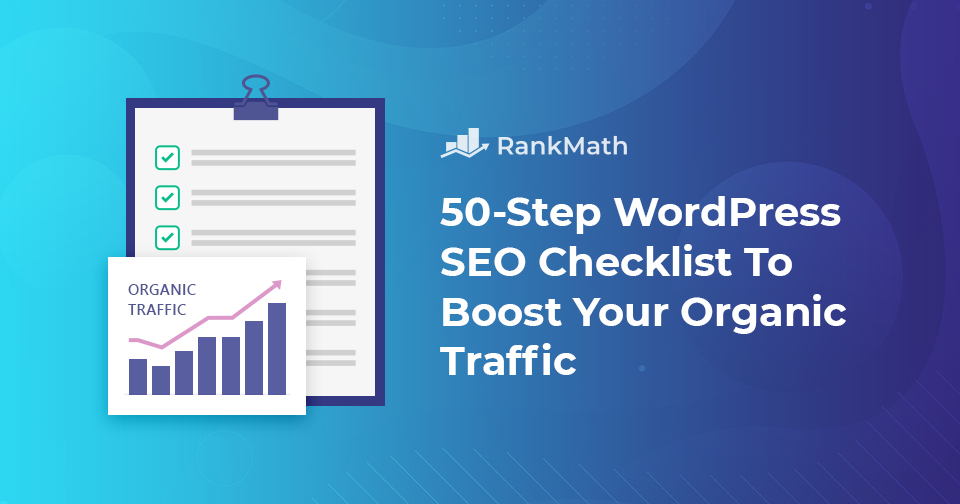SEO is far from easy. Those of us who’ve been in the industry for more than a handful of years will tell you that change is the only real constant.
With that being said, optimizing your website for search engines isn’t impossible. And while there are some technical aspects to it that are a bit tricky – the actual implementation of WordPress SEO best practices has become easier.
That’s exactly what we’ll be covering in this WordPress SEO Checklist.
In this guide, we’ll take a look at:
Getting Started with WordPress SEO Fundamentals
If you’re new to SEO, it’s important to know there are two sides to it.
The first is the foundation, it’s the technical part, which is focused on ensuring your site itself is set up in the best possible way. The second involves the approach your company uses as its go-to-market strategy and builds on top of that foundation.
If you have a weak or broken foundation, everything you try to build on top of that can easily crumble. But don’t worry.
We’ve got you covered!
Heads up: This detailed guide includes several common SEO terms, and if you aren’t familiar with any of them, you can refer to our SEO Glossary.
In this section, we’re going to be covering vital aspects of technical WordPress SEO.
- Choose A Reliable, Secure & Fast Hosting Provider
- Ensure You Have An SSL Certificate Installed
- Set Your Preferred Domain
- Use An SEO-Friendly WordPress Theme
- Ensure That Your Website Is Responsive
- Install A WordPress SEO Plugin
- Check Your WordPress Website’s Visibility Settings
- Use An SEO-Friendly Permalink Structure
- Verify Your Website Ownership with Google Search Console
- Set Up An XML Sitemap
- Submit Your XML Sitemap (Google Search Console)
- Submit Your XML Sitemap (Bing)
- Submit Your XML Sitemap (Yandex)
- Make Sure Image Attachment Pages Are Not Indexed
1 Choose A Reliable, Secure & Fast Hosting Provider
Not all hosting providers are the same. Now more than ever before, it is fundamental to ensure your site is hosted with a reliable, secure, and fast hosting provider.
Going with a cheap option may make your wallet happy for a little bit, but you get what you pay for with cheap hosting options.
As that’s the case, we very strongly advise you not to go for the cheapest options out there.
So while the options below are far from a definitive list of all the good WordPress hosting providers, these are some of the very best solutions that members of our team have experience with and can wholeheartedly recommend:
Servebolt (our current hosting provider)
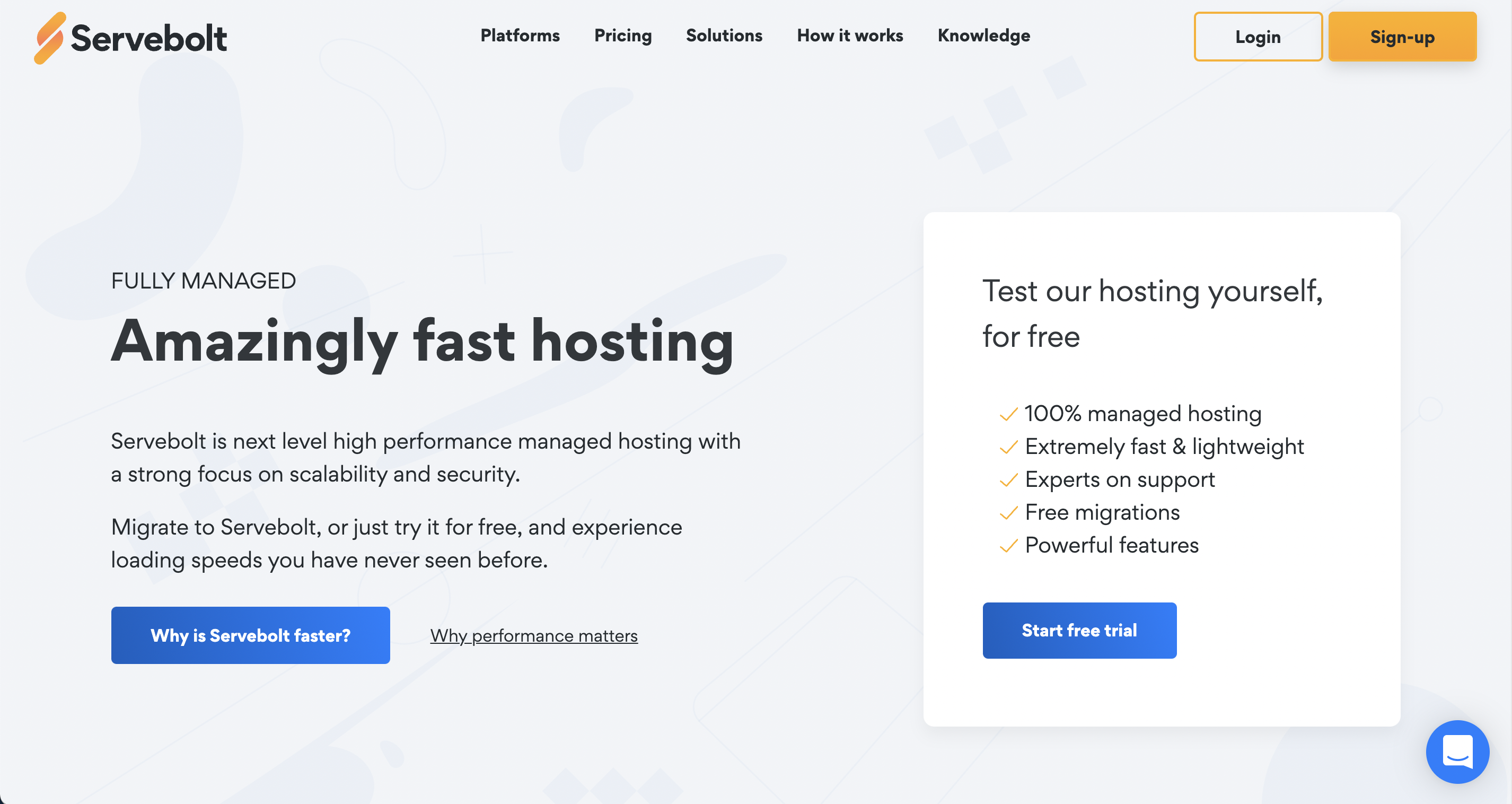
Servebolt is an industry leader. After we’ve hopped between multiple different providers & being burned quite a few times for both the Rank Math & MyThemeShop websites, we’re very glad to be in the hands of their expert team that truly know the ins and outs of WordPress & were comfortably able to fix performance issues that arise when scaling incredibly high traffic websites built on WordPress.
Simply put, we could not be happier.
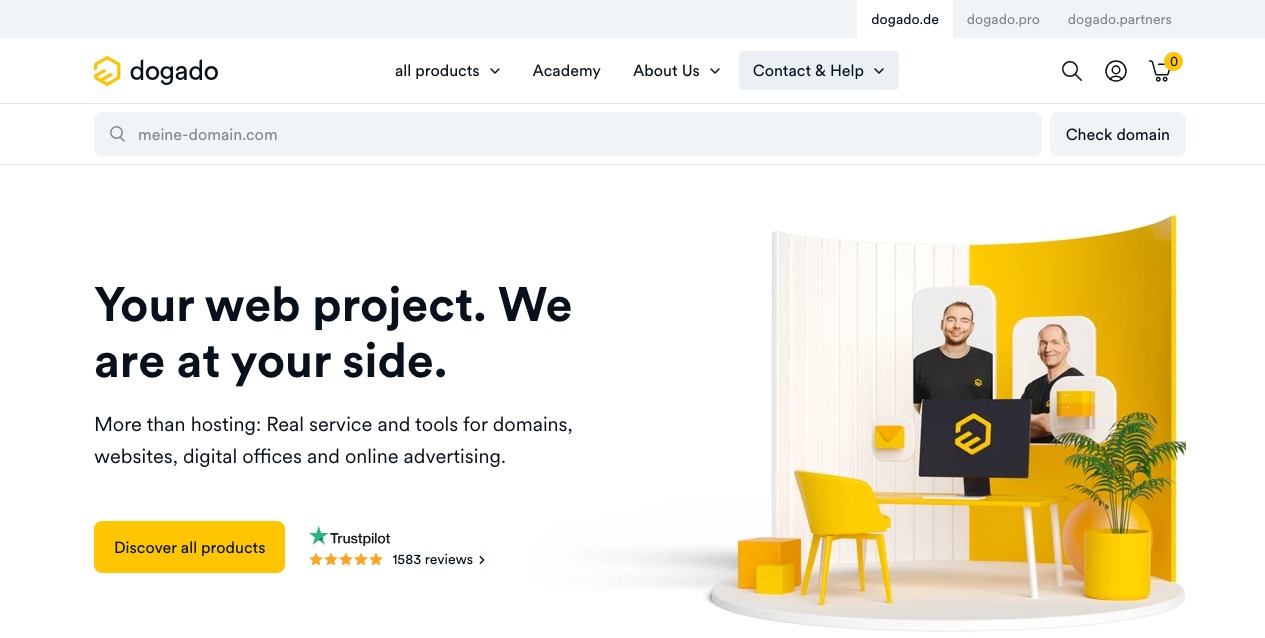
dogado is not only a reliable cloud hosting provider but also offers specialized WordPress Hosting, perfect for those looking to run a WordPress website. Based in Germany, the company is renowned for its ultra-fast web hosting, powered by the innovative dogado Speedrun technology. Combined with their WordPress Hosting, this ensures that your WordPress pages load at top speeds. This is not only beneficial for user experience but is also essential for achieving a higher ranking in search engines.
2 Ensure You Have an SSL Certificate Installed

Google stated, back in 2014, that HTTPS is an SEO ranking factor so having this on the list isn’t news.
If you want to take advantage of that HTTPS, you need an SSL certificate on your site. That being said, there are still a surprising number of websites that haven’t gone through the process of setting up an SSL certificate for their site.
Or they have but either did not fully complete the process or they set it up wrong.
So, to complete this step, you’ll need to install an SSL certificate and that blog post will walk you through all you need to do to get it done correctly.
While this is a seemingly small change that is easy to put on the backburner, HTTPS and having an SSL certificate are now standard. Especially if you process payments on your website.
Nobody wants visitors browsing their site – let alone those considering making a purchase seeing a warning in their browser “Your connection to this site is not secure”.
If you don’t have your SSL certificate installed correctly, that’s exactly what could happen!
Thankfully, if you’re using WordPress and a reliable hosting provider, deploying an SSL certificate is usually pretty easy, and many host providers can help you get it done correctly.
Once you have it set up on your site, we always recommend verifying the SSL certificate using the GeoCerts SSL Validation tool here.
3 Set Your Preferred Domain (No, Not in Google Search Console)
If you’ve read other WordPress SEO checklists or posts about WordPress SEO in general, you’ve probably read guides that mention you need to set your preferred domain variation in the Google Search Console.
Well, this is actually no longer valid or necessary as Google removed the preferred domain setting back in 2019. So, to set your preferred domain you actually need to ensure that this is done using a 301 redirect (which is always a better implementation for this).
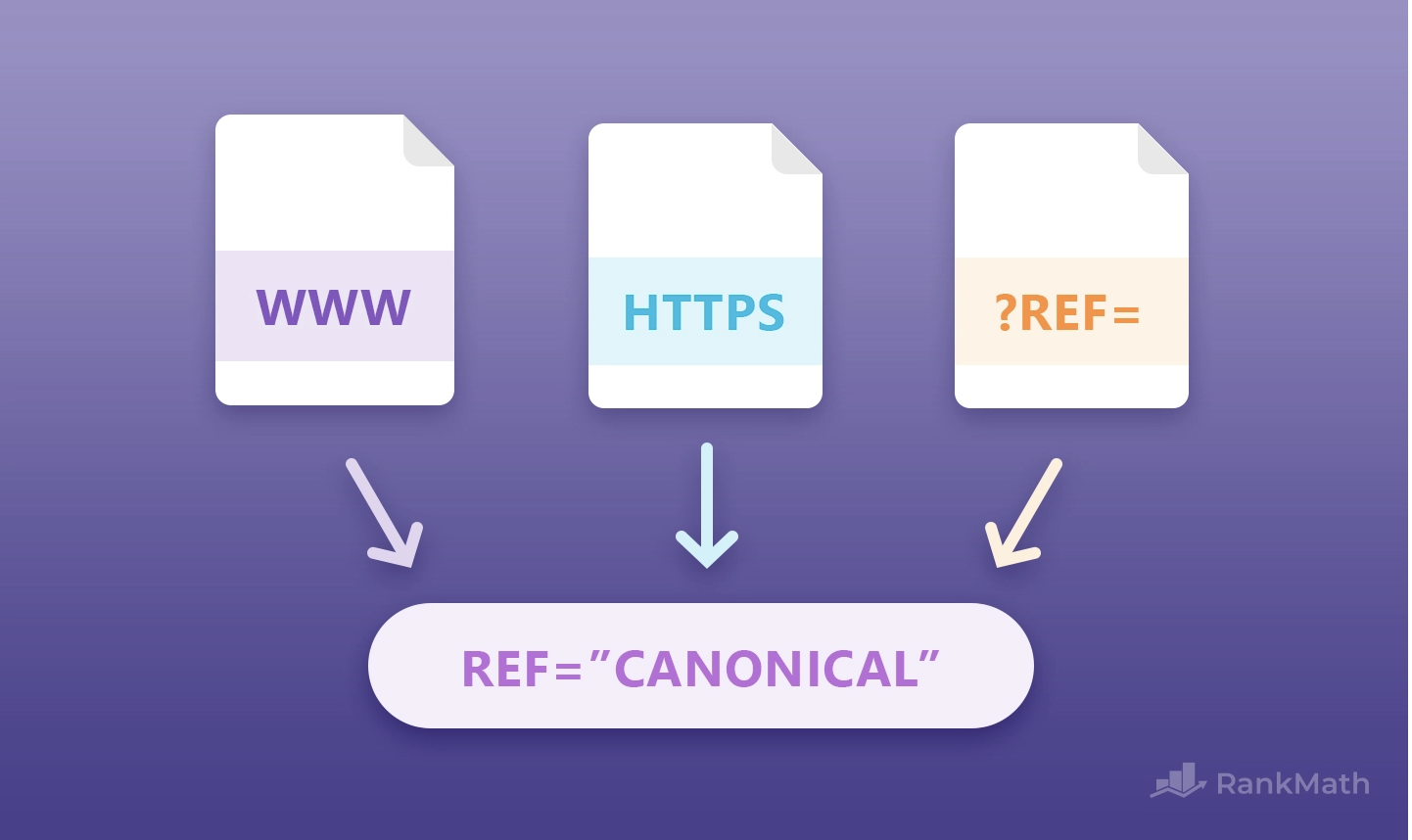
Learn more about Google sunsetting the preferred domain setting here.
That being said– you do need to set a preferred domain.
4 Use An SEO-Friendly WordPress Theme
There are literally tens of thousands of WordPress themes out there so the choice can definitely be overwhelming if you’re just getting into WordPress & web design/development. But the theme you choose can either help or harm your SEO in the long run.
To avoid that issue, it’s good to choose an SEO-friendly WP theme.
What Actually Is An SEO-Friendly Theme?
Okay, let’s be frank for a second.
The term “SEO-friendly” is thrown around so loosely that’s lost all meaning. So what does it actually mean?
The easiest way to define it is that an SEO-friendly theme that looks great no matter being viewed on mobile or desktop AND its architecture is made so that you can scale out your content in a way that search engines can read it correctly.
When you first install WordPress, depending on your hosting provider – you’re almost guaranteed to kick off with one of the default themes. Those themes are SEO-friendly but you probably aren’t going to end up wanting to stick with that theme forever.
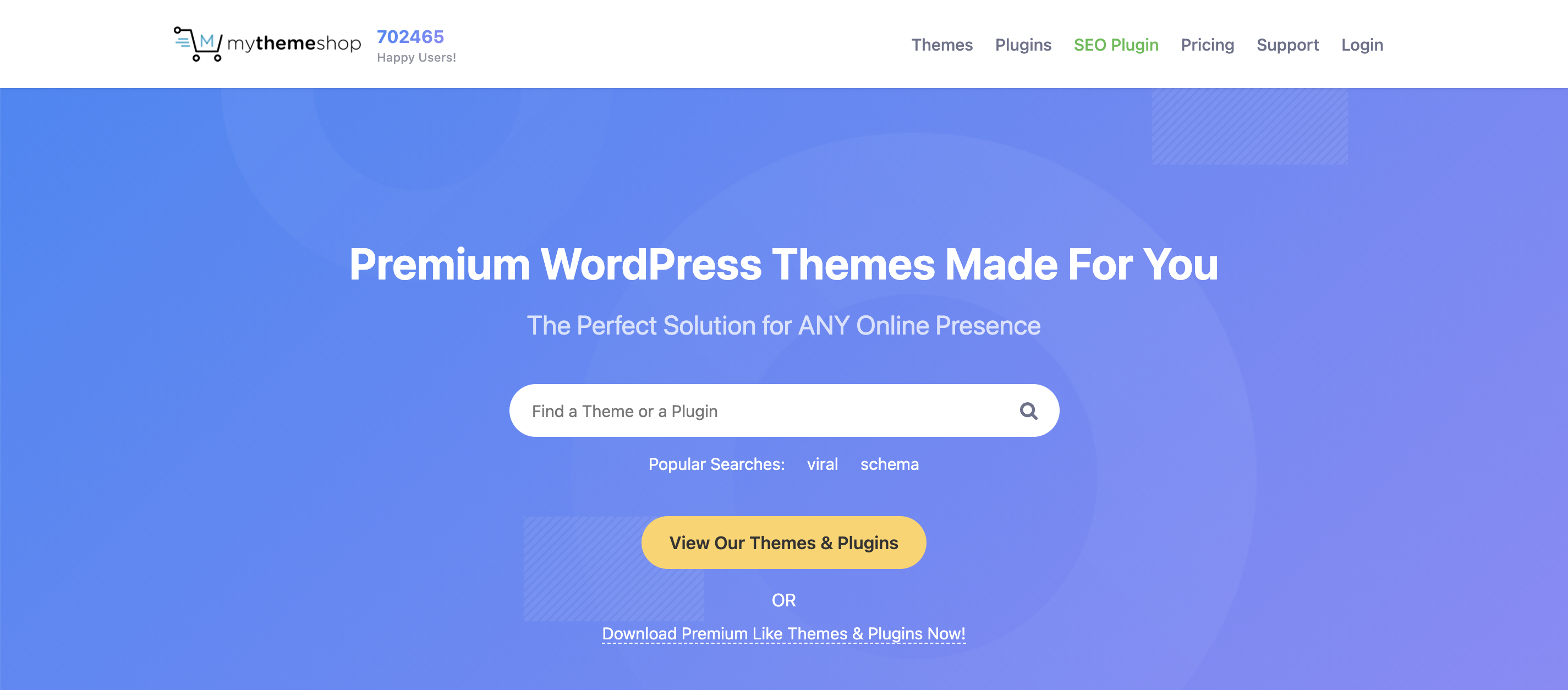
If you want to change to a different theme, then be sure to check out MyThemeShop. It was created by the same founding team as Rank Math (hey, that’s us!).
We’ve been in the industry for over 8 years, developing WordPress plugins and themes matched with a dedication to providing excellent support 24/7.
Our go-to starter theme is Schema (which is actually built on the same foundation that we use for the Rank Math website itself as well) and, as is recommended by industry experts including Ryan Robinson:
5 Ensure That Your Website Is Responsive
Google announced its plans to roll out mobile-first indexing back in 2016.
That is really old news, but just in case you missed it, it’s important to note this means that their ranking algorithms now primarily use the mobile version of a website’s content to rank pages.
That also means that ensuring your website is responsive is vital! If you’re late to the party, be sure to bump this issue up on your list of priorities today.
6 Install A WordPress SEO Plugin
There are a few WordPress SEO plugins out there, but we designed our Rank Math SEO plugin to help you increase traffic to your website.
If you want this handy tool as part of your WordPress SEO arsenal, then just follow the steps below.
Step 1 – Search for Rank Math SEO
If you go to your dashboard, click on Plugins, then Add New, and here you can search for it.
Step 2 – Click Install Now & Ensure the Plugin Is Active

Once you locate Rank Math SEO plugin in the WordPress plugin repository, simply hit Install Now to get started. The installation will start automatically. When it’s ready, click on the Activate button under the plugin.
This can also be done by navigating to your WordPress website’s plugin’s page, locating Rank Math SEO in this list, and then clicking activate here, as shown below:

Step 3 – Finalize Your WordPress SEO Plugin Setup
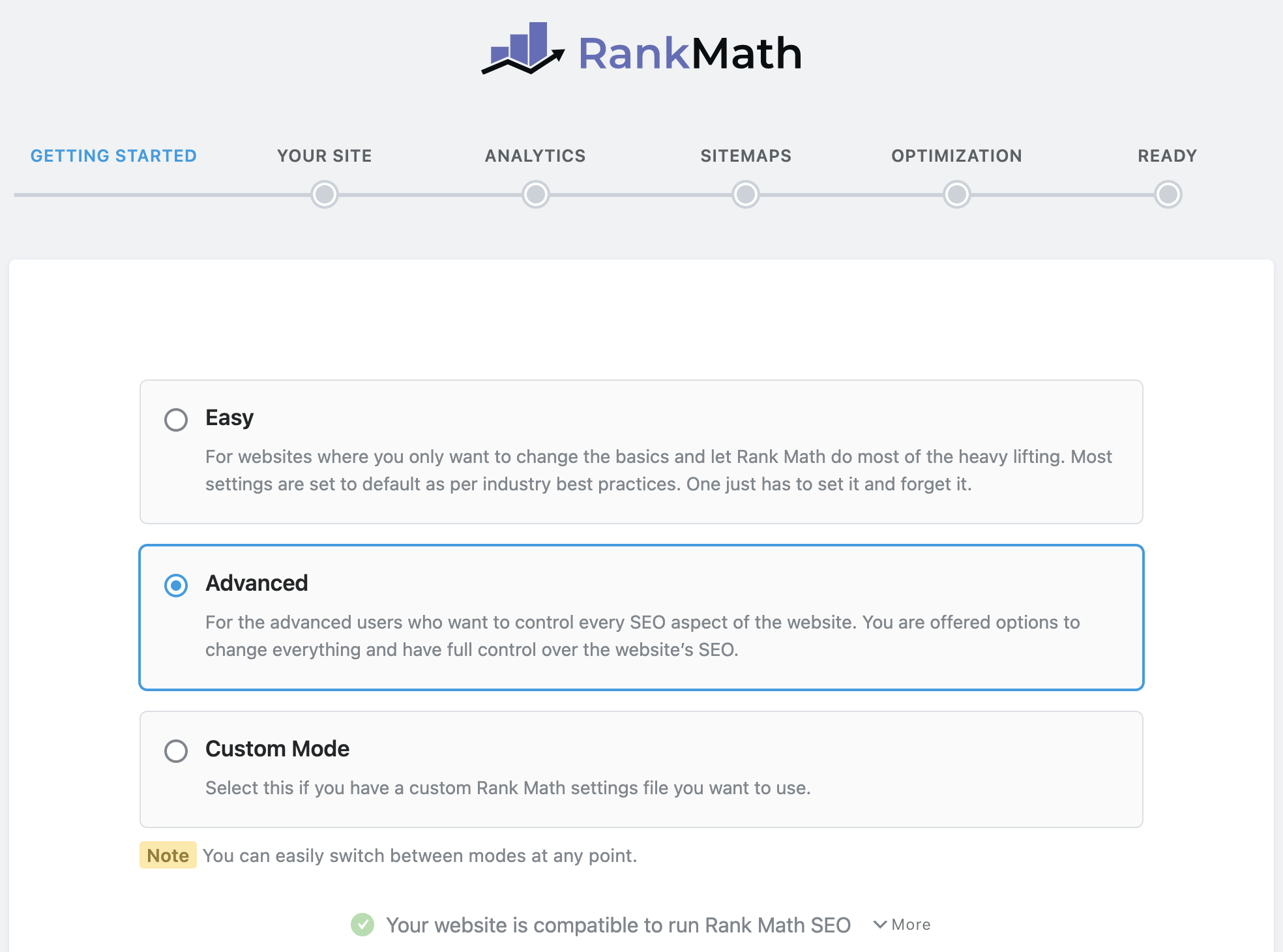
And that’s pretty much it! Next, all you need to do is finalize your setup by reviewing all of the relevant settings in this Rank Math SEO for WordPress setup guide here.
Learn more about the Rank Math SEO installation process here.
Step 4 – Upgrade To & Activate Rank Math PRO (Optional)
If you’re ready to take things to the next level and want to take advantage of advanced SEO techniques which we’ll get to later in this checklist – you may be a perfect candidate for the PRO version of our WordPress SEO plugin.

Here’s a detailed list of over 45 reasons why industry-leading SEOs choose Rank Math over the competition – including:
- Built-in Rank Tracking
- Rank Math’s Advanced Schema Generator
- Export and Import SEO Meta (Make Changes at Scale)
- And more…
7 Check Your WordPress Website’s Visibility Settings
This is a bit of a basic one, but surprisingly easy to overlook especially when a website is continuously pushed from staging to production (often quite carelessly).
To ensure that your website is indexable and search engines are not discouraged from indexing your website, navigate to WordPress → Reading, as shown below:
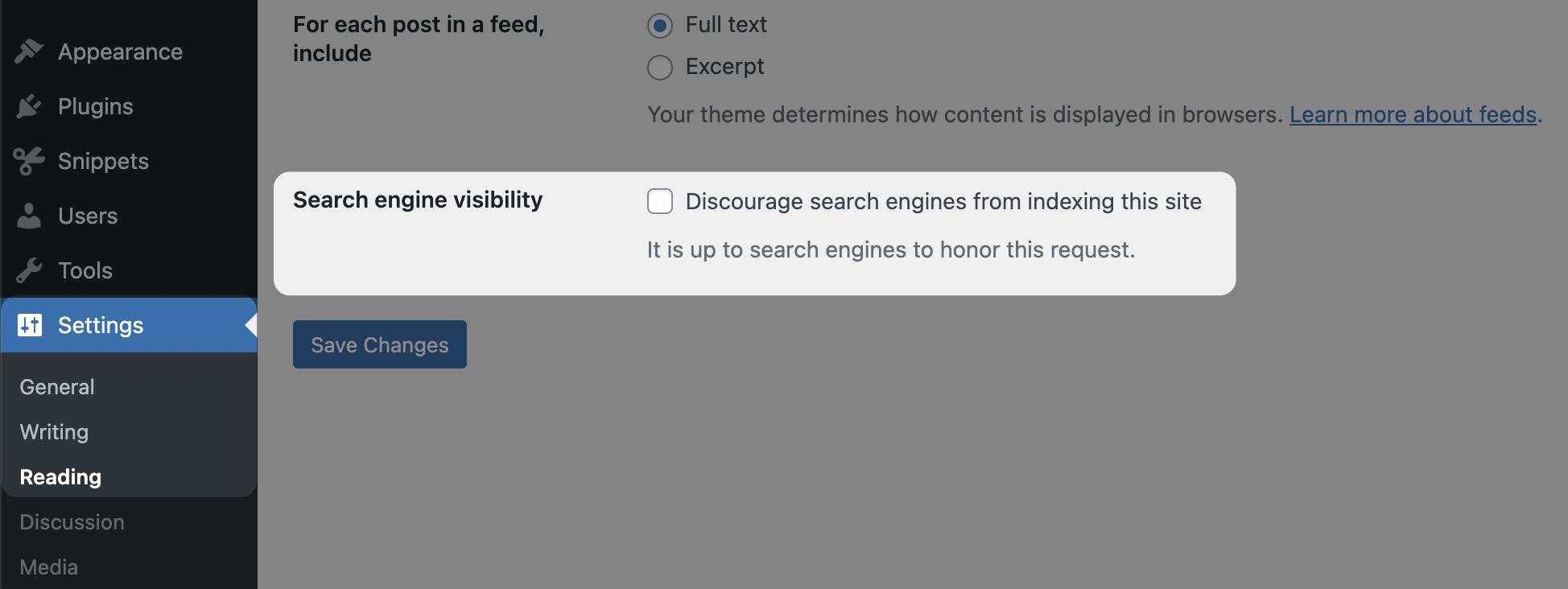
Here you want to make sure that the checkbox is not ticked if you want search engines to be able to discover content on your website.
Sometimes your web hosting provider can automatically enable this setting for staging sites, and pushing from staging to production does not automatically disable this so we always advise double-checking after making significant changes that may result in the setting being modified.
8 Use An SEO-friendly Permalink Structure
When you set up a new WordPress installation, it defaults to using a messy permalink structure that just isn’t user-friendly and as a result is also not ideal for SEO.
Depending on your web hosting provider your permalink’s default structure may insert the full date along with the post or page name into your URL, like this:
https://rankmath.com/2022/09/02/sample-post/
This is far from ideal, especially if you’re creating evergreen content that you intend to rank and generate traffic with for months and years to come. (You can’t do that with a date attached to the post…)
In addition, for users and searchers to better understand content it’s more desirable to use a URL that contains the content title and shortened manually to fit.
This example is from our content on our blog and shows you what we mean by this.
https://rankmath.com/blog/image-seo/
You can change to the same permalink structure that we use for our website by navigating to Settings → Permalinks and selecting the custom structure option as shown below:
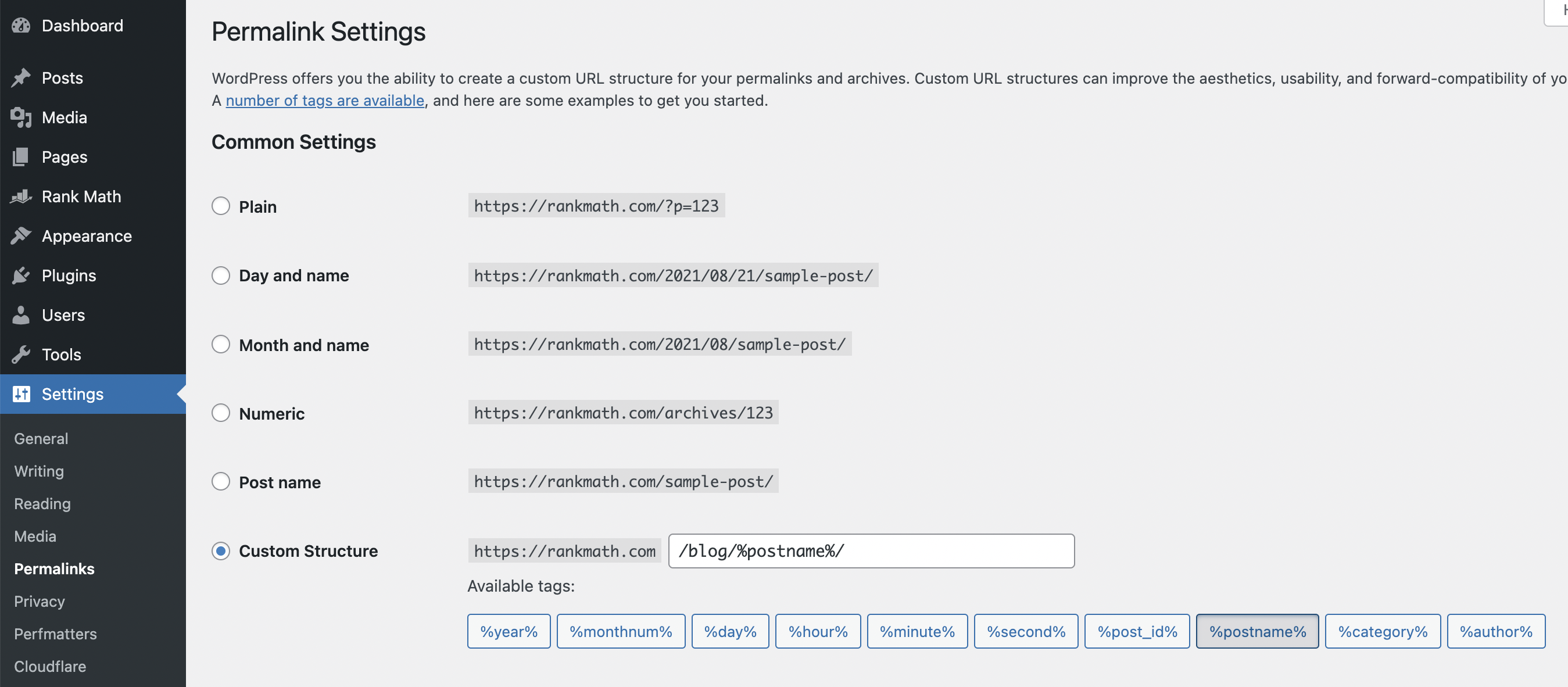
In the above scenario and for our website we’ve added /blog/%postname%/ because we prefer to differentiate posts and pages on our site to improve our site architecture. This may not be necessary or desirable in your specific case, in which case you can use the Post Name option or simply remove /blog/ from the custom structure…
Note: Please proceed with caution if this is an existing website you are making changes to. This can result in the loss of search traffic if you are making a change without implementing the proper 301 redirects.
9 Verify Website Ownership with Google Search Console
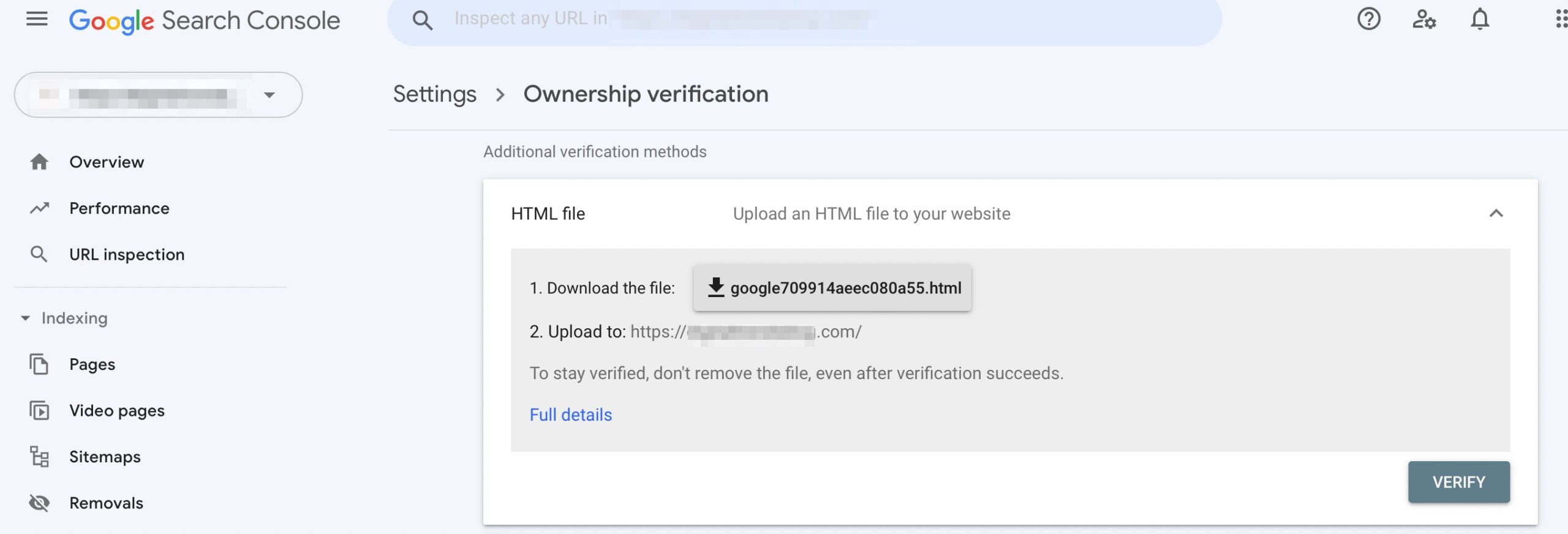
Since you’re using WordPress and have now installed the Rank Math plugin, verifying your website in the Google Search Console is incredibly easy.
To get started feel free to refer to this detailed article in our knowledgebase:
Learn more about how to verify your site with Google Search Console here.
10 Set Up An XML Sitemap
Search engines such as Google, Bing, and Yandex still use XML Sitemaps to gain a better understanding of the structure and architecture of your website so they can easily crawl your website and get new content indexed:
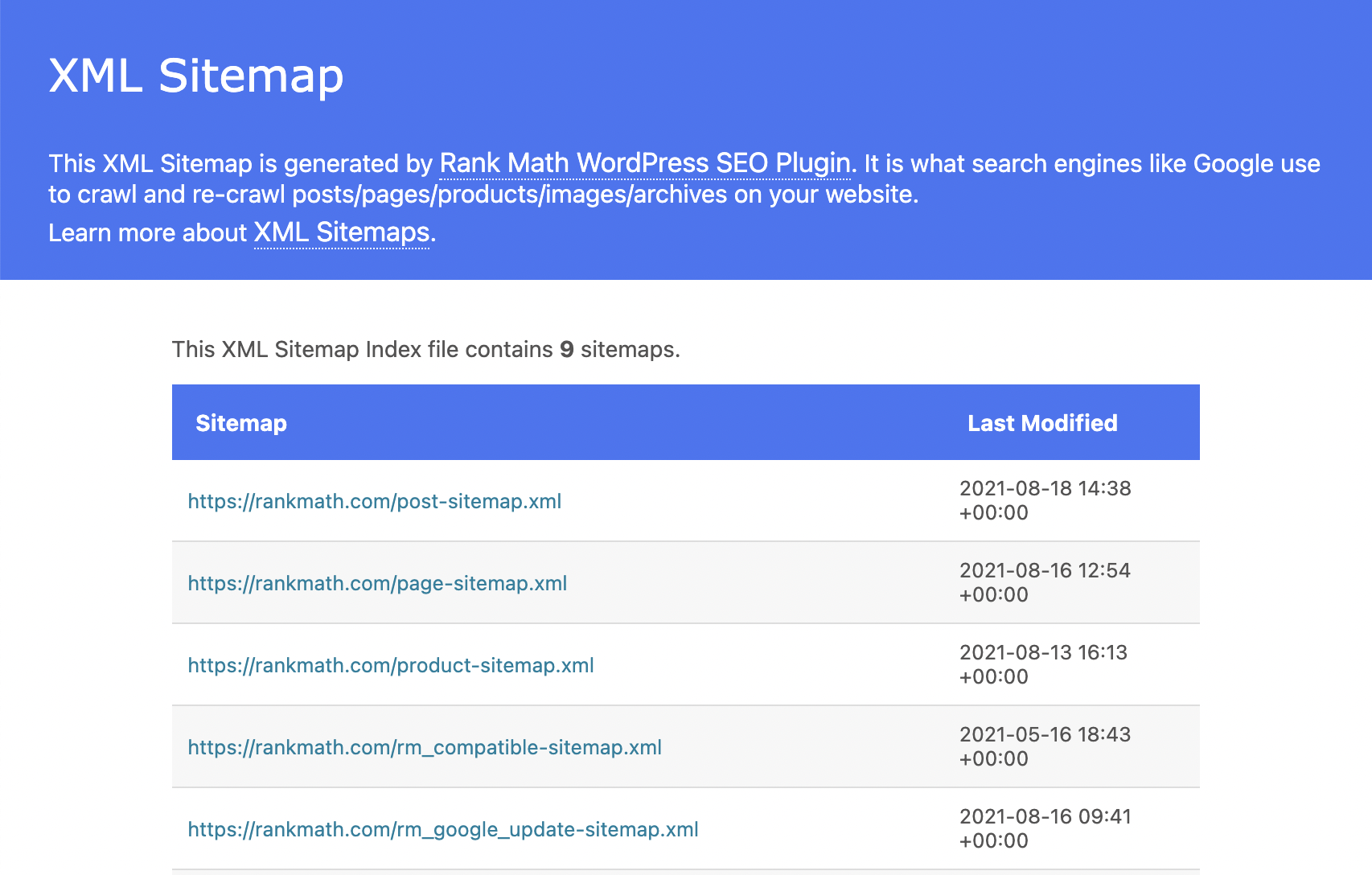
Learn more about how to configure sitemaps for your WordPress website here.
11 Submit Your XML Sitemap to Google Search Console

Now that you’ve set up your XML sitemap it’s time to submit it to the Google Search Console. This will give you access to additional information regarding the status of your site in search.
Fortunately, this is super simple and we also have a definitive guide on submitting your sitemap to the Google Search Console here.
12 Submit Your XML Sitemap to Bing Webmaster Tools
Since you’ve just done this in the Google Search Console, you should also go ahead and submit your sitemap using Bing Webmaster Tools.
You can (perhaps somewhat ironically) sign up using your Google account and then verify Bing Webmaster Tools using previously verified properties that you have in Google Search Console.
This is super simple and can be done by firstly navigating to Bing Webmaster Tools & logging in (or creating an account if you haven’t already done so).

At which point you will see the following and simply need to enter the URL of your website’s sitemap, as shown below:
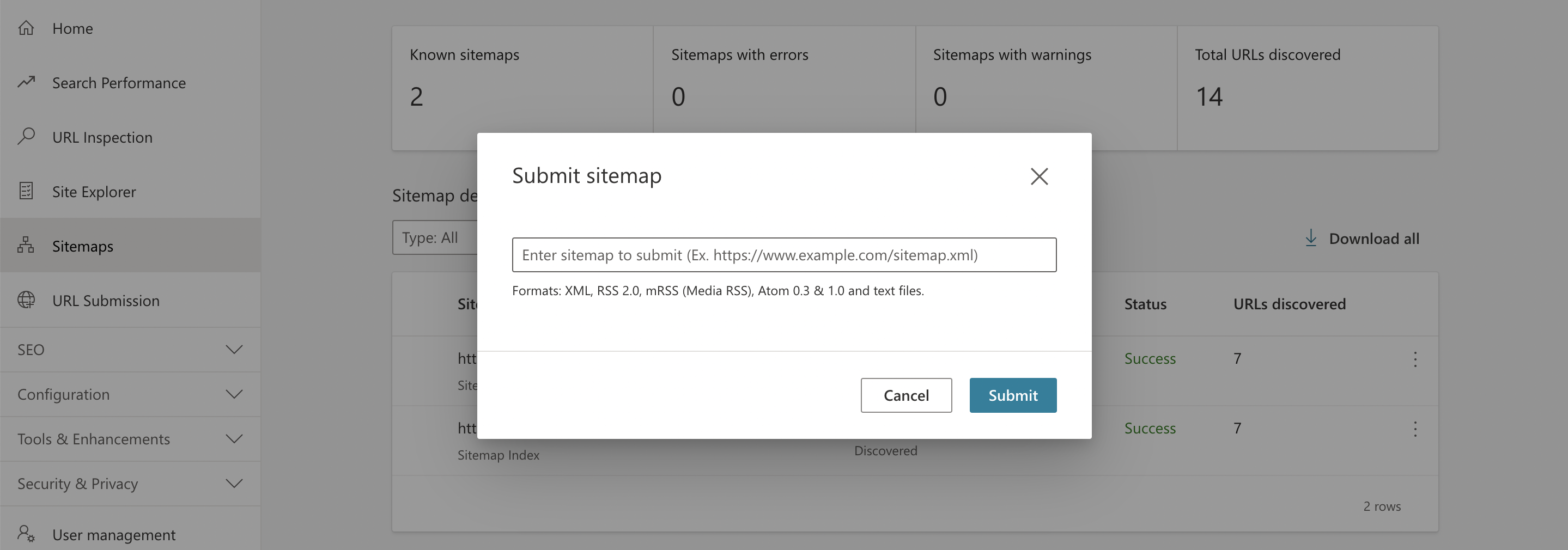
You can also refer to this super simple guide for submitting your sitemap to Bing for a detailed step-by-step walkthrough.
13 Submit Your XML Sitemap to Yandex Webmaster Tools

Last but not least don’t forget to submit your sitemap using Yandex Webmaster Tools. Doing so is fortunately even easier than both of the above.
To get started, navigate to Yandex Webmaster Tools here where you’ll be prompted to log into your existing account (or create a new one).
14 Make Sure Image Attachment Pages Are Not Indexed
Similar to the WordPress visibility setting that is literally just a single checkbox, this is a seemingly simple oversight that can lead to significant issues — especially as your website grows.
Usually, by default in WordPress, whenever you upload an image to your website and proceed to insert it into content on your website, WordPress would automatically create a separate attachment page on which there is nothing but the image.
This creates a ton of “weight” to your site speed.
All it does is dilute your website with tons of thin pages that add absolutely no value to your website visitors and depending on the number of images on your site, it can significantly affect your site’s ability to get new content crawled & indexed quickly (this concept is often referred to as crawl budget).
Fortunately, this is also something that is super simple to change in the Rank Math SEO plugin’s settings.
The option is available by navigating to Rank Math → General Settings → Links and enabling the following option, as shown below:

Learn more about redirecting media attachment URLs here.
WordPress SEO – Page & Post Optimization
In this section, we’ll take a look at:
- Start Performing Keyword Research & Mapping
- Write The Best Content
- Don’t Shy Away From Linking To Great, Helpful Resources
- Use Short and User-Friendly URLs Whenever Possible
- Write Appealling Meta Title Tags
- Optimize Meta Descriptions To Improve Click-Through Rate
- Work Your Focus Keywords Into Your Blog Post Introductions/Hooks
- Model Your Posts & Pages Around Search Intent
- Take Advantage of Internal Linking
- Optimize Image File Names
- Optimize Image Alt Text
- Use Custom, Well-Designed OpenGraph Images
- Use Video Content To Your Advantage (Improve Time On Site)
- Ditch The Concept of Meta Keywords
- Consider Content Length. Length != Quality
- Take Advantage of News Sitemap
15 Start Performing Keyword Research & Mapping
When creating content, it’s important to always set a focus keyword to encourage you to consider the purpose of content from a searcher’s perspective.
When we say focus keyword, we mean this in two ways:
- Focus keywords are ones that can be added to all posts, pages and custom post types with the help of Rank Math.
- And, of course, actually considering the content you are writing and whether it addresses what should be covered in a post or page that is aiming to rank for a specific keyword.
Fortunately, #1 helps make #2 much easier.
Keyword research on an individual post and page basis is relatively straightforward.
It starts at the root of the problem you’re solving with your content and addresses everything relevant to that based on what searchers seem to be looking for (i.e. evaluating search intent).
On a site level, you can however even perform competitor analysis using tools like SimilarWeb, Ahrefs, and Semrush to reverse engineer what’s working for other websites producing content around the topics that are relevant to your business & that you intend to target.
16 Write The Best Content
The key to writing great content.
SEO is competitive and doesn’t stop. The moment you outrank a competitor, they’re not just going to sit there and look at their site declining in search results saying “oh well, they beat us – great job to them”. A lot of sites are continuously improving their content which means that the bar in competitive verticals continues to be raised (which is also a big part of why competition is always a good thing).
Our team uses Content AI built into our Rank Math plugin to help us crank out the best content we can.

17 Don’t Shy Away From Linking To Great, Helpful Resources
There seems to be a growing demographic of people that are hesitant to link out to other websites in fear that they are helping other’s content rank that isn’t their own.
But the reality is that they are hurting their ability to rank if they don’t link to other reputable content as sources for their own content.
Not only does this give them the opportunity to develop excellent relationships with other website owners in the industry (or parallel industries), it’s an indication that your content is covering something that is also covered on other websites and therefore more likely to be relevant.
18 Use Short and User-Friendly URLs Whenever Possible
Earlier we covered that the default permalink structure on WordPress is less-than-ideal. Well, by default when you create a new post or page draft (or custom post type) on your website – the permalink that is set automatically can also be extremely long.
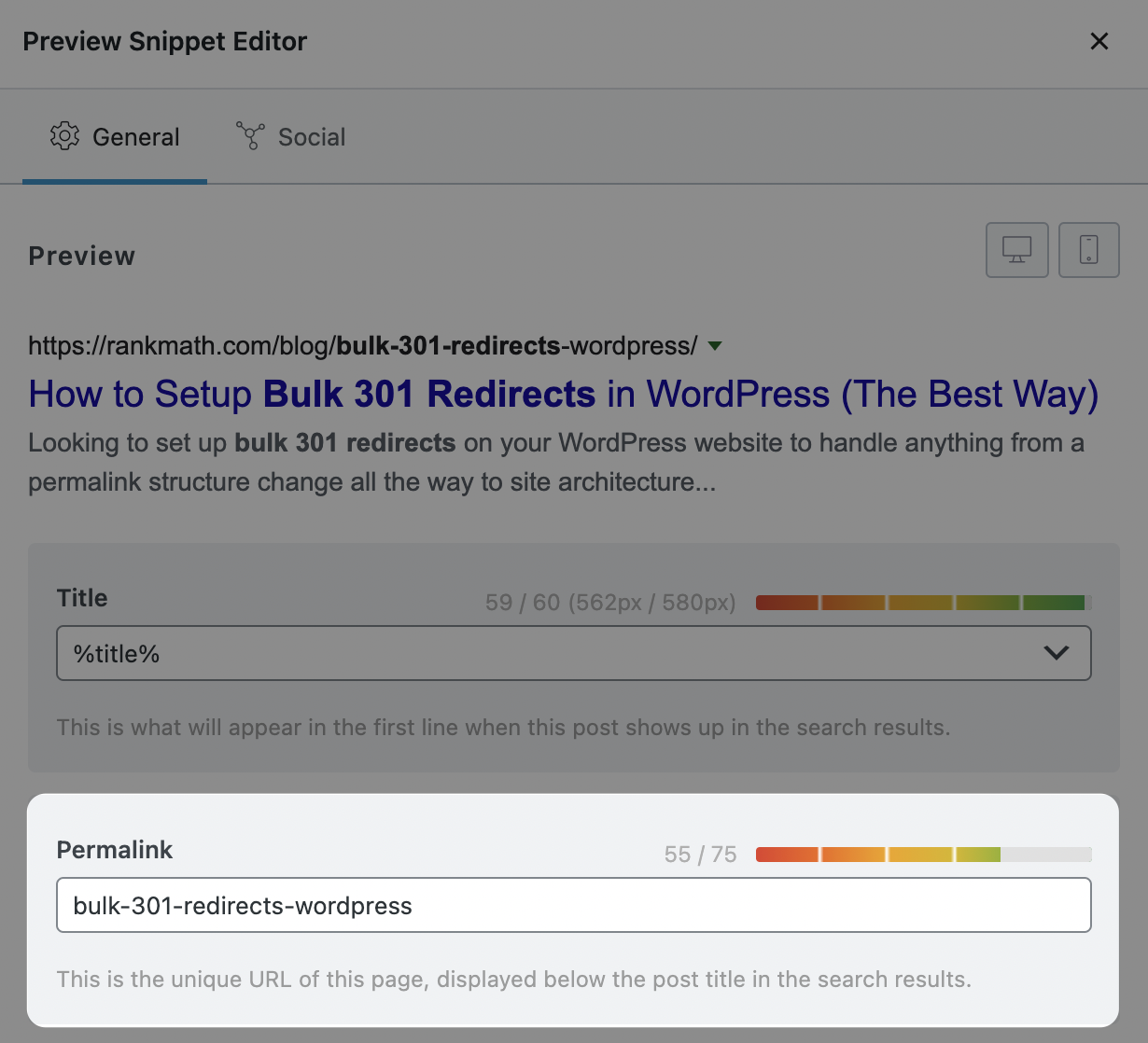
This isn’t the best situation, but it’s the norm for the URL to simply be based on the draft’s title alone.
We recommend always manually customizing the permalink that is set to ensure that it doesn’t include anything that makes it unnecessarily long.
The general rule of thumb here is to use short, user-friendly URLs whenever possible.
19 Write Appealing Meta Title Tags
All of your content should have a really appealing meta title tag.
All of the pages on your site that you want to drive search traffic to should have a really appealing meta title tag. This is because it’s the first interaction. The very first thing that searchers see and are very often what determines whether you’re going to win the click over the other websites also ranking right above or even below your content.
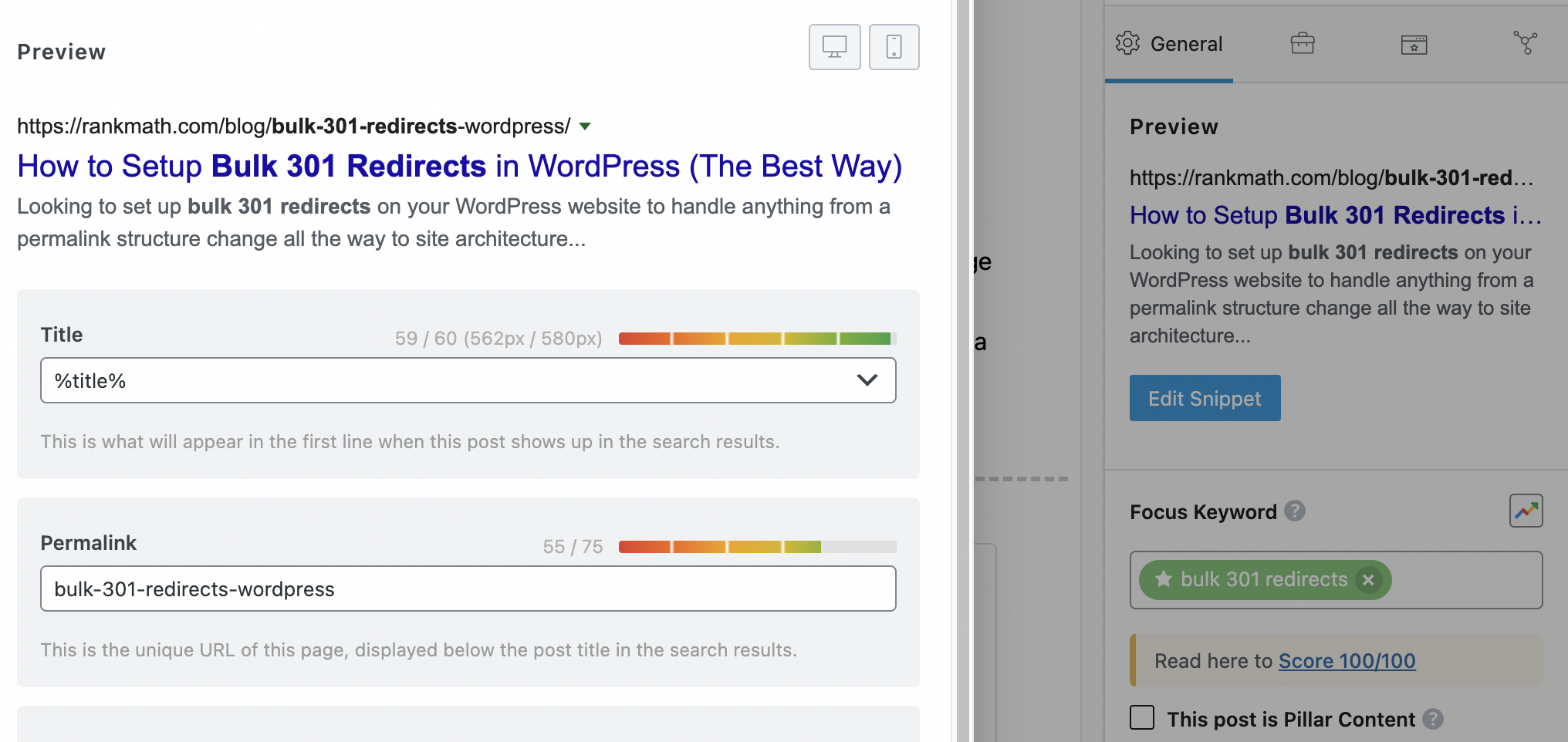
Although many will be well aware that Google has and still does generate page titles of its own that often override whatever it is that website owners are set for individual pages – this is still well-worth doing as it is an indication to Google and very often still informs what ends up making its way into the search engine results pages.
There’s no definitive answer to how to write the best title tag & what it would be for every single page out there, but here are some best practices we rarely deviate from:
- Use numbers whenever possible (as this has been shown to improve click-through rates)
- Use power words whenever possible (don’t lean towards writing generic meta titles like everyone else, try to stand out in SERPs – within reason)
- Use a positive or negative sentiment in your title (whenever possible, this helps you stand out and pique the searcher’s interest)
- Make sure they’re unique (don’t blatantly copy competitors titles because they’re ranking well, your title tag should be unique)
- Keep them short. These are tags, not a novel.
- Include the focus keyword (i.e. the one you’re targeting and aiming to rank for)
20 Optimize Meta Descriptions to Improve Click-Through Rate
Similar to meta title tags, meta descriptions are well worth setting as they affect your content’s click-through rate in search.
A well-written meta description can mean the difference between someone clicking on your post as opposed to another post that appears above or below your content in search engine results pages.
And this does indirectly affect your rankings since the higher your CTR the more relevant Google will see your content and that can lead to significant ranking improvements.
Fortunately, Rank Math also makes this super simple by clicking on the Edit Snippet button, as shown below:
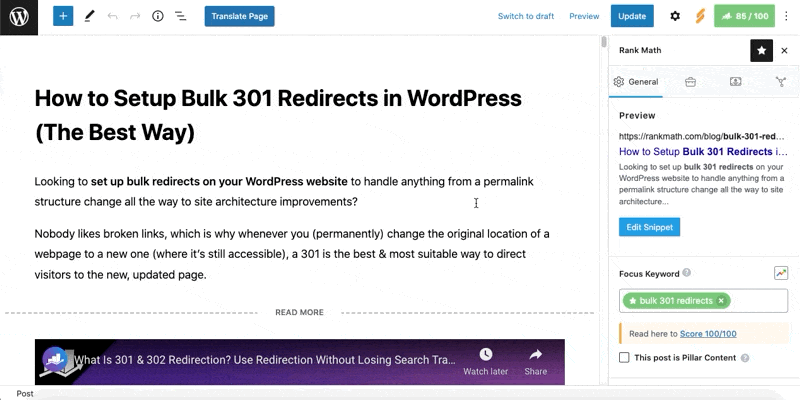
Meta descriptions have a little more real estate than meta title tags, so what should they include? Well, there’s no definitive answer to what the best meta description looks like for your content but here are some best practices on writing meta descriptions:
- Keep it concise – meta descriptions need to be short and sweet.
- Include the focus keyword (i.e. the one you’re targeting and aiming to rank for if you can do so naturally)
- Make sure they’re unique (don’t blatantly copy competitors titles because they’re ranking well, your title tag should be unique)
- Take this opportunity to convey the value of your content (your webpage) vs. any other web pages that may be right above or below you in search engine results pages to the searcher. This is your opportunity to earn their click. Use it wisely.
- Don’t write an essay, write conversationally and naturally so people enjoy reading your content.
- Don’t write in passive voice, use the active voice when possible.
21 Work Your Focus Keyword Into Your Blog Post Introductions/Hooks

After your meta descriptions and meta title tags, your actual blog post intros are the next thing that will determine whether they stay longer than just a few seconds.
Focusing on writing these well is incredibly important and really worth the extra time.
And while we highly advise against doing this when it is not natural, using your focus keyword in your blog post introduction is a great way to ensure that you are really writing for your reader and for the search intent that you are trying to target.
Let’s look at the example in the image above, which is from our post on recovering from Google algorithm updates.
I wrote this without even thinking about our focus keyword. Instead, I just kept in mind the problem we are helping people with, and that naturally included recovering from Google algorithm updates. I tucked that phrase into the blog intro to help grab attention and keep people on the blog.
22 Model Your Post and Page Content Around Search Intent
Google is increasingly able to understand the content and the purpose it serves to rank pages. Our job as SEOs is increasingly edging towards a focus on what the user wants.
This is where search intent comes in.
Simply put, search intent refers to what the purpose of a search is (i.e. what is it that a searcher performing this search is going to be looking for?).
In order to create truly useful resources, it’s essential that this is taken into consideration.
Take this blog post about WordPress SEO as an example. We’re modeling it around what we as users of WordPress would also want to see in what we’re making the most definitive and complete guide on WordPress SEO out there.
While search intent isn’t some secret to ranking, it’s often the very first step.
If you can’t nail search intent, then everything you do in terms of technical SEO, off-page SEO (link building and content promotion), isn’t going to have as much potential to move the needle as it would if the content and resource you’re promoting is genuinely the best out there.
In short, the same way marketing a bad product is an uphill battle – ranking bad content that doesn’t serve the purpose it should is too…
23 Take Advantage of Internal Linking
An internal link is a link that directs users from one page (or post) on your site to another post or page on the same website. They’re essential when it comes to SEO (helping search engines and site navigation. Simply put, here’s why you need to use internal linking:
- They make it much easier to navigate your website (meaning more of your content is resurfaced)
- They make it easier for search engines to understand the architecture of your website and the importance of content.
- They are the main way you can distribute authority throughout your website (i.e. passing value through internal links from content with tons of links to content that has yet to attract links, etc.).
We have covered how Rank Math helps streamline internal linking here.
24 Optimize Image File Names
Forgetting to optimize image file names is incredibly easy because it is something that has to be done before images are uploaded to your website.
For example, if you were to upload images directly exported from a Microsoft Word document, they would by default all be named using the format word-image-1, word-image-2, and so on.
Evidently, this is less than ideal. Image file names should always abide by a few best practices:
- Name your images using actual words indicative of what your content is about before uploading them to WordPress.
- Hyphenate words or use underscores (i.e. wordpress-seo.jpg or wordpress_seo.jpg). This ensures that search engines/crawlers are able to easily read your image file names.
- When suitable – and to reiterate only when suitable – include your focus keyword in your image file name, such as for your featured image for example. We almost always use the focus keyword of our blog posts for our featured images on our blog.
- And lastly, don’t capitalize words, this is more of a matter of sanitization & ensuring consistency across your image URLs.
25 Use Descriptive Image Alt Text and Captions
Alt Text (otherwise referred to as alt tags) is short for “alternative text” which is used to describe an image on a webpage. It serves multiple purposes, but primarily it’s to help screen-reading tools describe images to your visually impaired reader.
Alt text is also a good way to slide in some keywords, so long as they kit naturally into the image.

In general, optimizing images for search is a key way to keep your blog content SEO-friendly. And, of course, search engines do also use it to better crawl and understand websites.
26 Use Custom, Well-Designed Images
Now that we’ve covered optimizing the images on your WordPress website, it’s time to go over why using images in the first place adds an incredible amount of value to your website and content in a number of ways, including:
- The direct impact of your images ranking in Google’s Image Search product generating additional traffic to your website that way.
- Making your content far more appealing than your competitors’ content and therefore also more likely to attract links (and drive conversions).
- Images make your content more interesting and will increase time on site because people are less likely to be bored as they make their way through your blog posts.
As an added note, always ensure images are optimized for performance. This means aiming to keep them around 100KB to have the smallest effect on your page loading times.
Additionally, it’s important to note that the effects and benefits described above are usually attainable when using custom, really well-designed visual content that suits your brand.
27 Use Video Content To Your Advantage (Improve Time On Site)
Repurposing Written Content On YouTube
In case you haven’t noticed, we’re big fans of written content. Everything from tutorials, written guides, and everything in between.
We also understand that lots of people prefer to watch video content and find it easier to understand concepts that way.
That’s why we started investing in producing and often, repurposing content that we already have as written content on our website as video content that goes on YouTube.

This allows us to reach a much wider audience. This works out well for our SEO because YouTube is a platform owned by Google and is a huge source of traffic as well.
Optimize Videos for Search
And once you have videos to optimize for search, you’ll be able to take advantage of more of the functionality that Rank Math PRO has to offer too.
This includes embedding your video content in your written content on your website and then using Video Schema and Video Sitemaps to help Google crawl and index this accordingly. And you’ll be pleased to hear that if you already have video content embedded on your website and recently installed and activated Rank Math (and Rank Math PRO), you can easily retroactively add Schema structured data to video content, as described here.
28 Ditch The Concept Of Meta Keywords
Fortunately, this is one item you can cross off your WordPress SEO checklist without actually doing anything because meta keywords are a thing of the past. Google no longer uses them.
We’ve included this point here to make sure that those looking to learn more now that they’re no longer needed and spending time setting this up for your website will have no impact.
It is unclear whether other search engines including Yandex or Baidu still use them, but given that the vast majority of ranking sites no longer use them it is safe to say that ignoring this and not wasting time with setting it up is our recommendation because there are far better ways to spend your time if you’re looking to drive significant change to your organic traffic.
29 Consider Content Length. Length != Quality
Google values high-quality content.
Some may argue that this is independent of length but the reality is that there is a correlation between content depth and content length.
Nobody wants to read surface-level content which is why you’ll rarely come across it ranking in the search engines (unless it’s suitable for the search intent).
Search intent is the real key here.
While it’s easy to broadly say that longer content has more depth and more potential to be valuable, this heavily depends on what you’re writing about in general.
For example, if you’re adding a glossary to your website to define key industry terms that you know people are searching for it doesn’t make sense to just add a bunch of unrelated content after definitions to boost that page’s word count.
That adds literally no value.
Every single word of your content should actually add value to your content and play a role in making it more useful for people to read your content.
And as you can imagine, we’re observing the same results as all the other case studies out there. Otherwise, we’d switch up and focus on creating tons of short content instead of publishing longer extremely in-depth well-researched blog posts.
More extensive, more helpful content is always more likely to be evergreen (AKA has no shelf life and bring in traffic for years to come) because few will go out of their way to beat the research and effort you’ve put in.
30 Take Advantage of News Sitemap
If you post a lot of content that is somewhat like news-related updates, then this is a great way tip you’ll probably want to take advantage of.
Appearing in the Google News search results use to have people jumping through a lot of hoops to make it happen. But know they’ve lowered the threshold to get there so having your content show up in this coveted area of SEO real estate is much easier.
There are still guidelines, and you should know that your content will only show for two days. But that’s should turn you away from paying attention to this option. Articles can go viral rather quickly, so if your content is keeping up with search trends and what’s current, you may just garner a lot of attention.
There are many ways you can go about creating a News Sitemap for your site to make it easier to show up on Google News, but we’ve found this option to be the easiest one.
The Next Level – Advanced WordPress SEO
Okay, it’s about to get no technical here, so hold on to your hats. We’re diving in deep.
In this section, we’ll take a look at:
- Get Your Site Content Indexed Instantly
- Start Optimizing Your Site Speed (Core Web Vitals)
- Strategically Noindex Tag, Category and Other Low-Value Pages
- Take Advantage of Schema Markup to Win Rich Snippets
- Take Advantage of the Markup Social Networks Support
- Use The Last Updated Date Instead of Post Published Date
- Format Your Content To Help Readers Find Information
- Start Earning Links from High Authority Domains
- Track & Avoid Keyword Cannibalization
- Understand & Use Nofollow, Sponsored and UGC Link Attributes Where Applicable
- Track Negative SEO And Keep It Under Control
- Use Specific Local SEO Strategies If Applicable To Your Business Model
- Start Dominating International Markets with Multilingual SEO & Content
- Frequently Monitor 404 Errors & Fix Broken Links
- Start Performing Scheduled SEO Audits
- Keep An Eye On Your Site’s Performance
- Monitor Keyword Ranking Changes
- Build A Process To Update Old Content Instead of Only Publishing New Content
- Take Extra Care With Staging Environments & Potential Duplicate Content Issues
- Build Out Important Pages As Trust Signals To Website Visitors and Search Engines
31 Get Your Site Content Indexed Instantly
If you want to rank faster, then you want your content to get indexed sooner rather than later. Thankfully, using Google’s Indexing API you can get your content indexed pretty much instantly if you manage to do this right.
In our own experience, we were able to get some of our content ranked within an hour and we were even given a featured snippet with two.
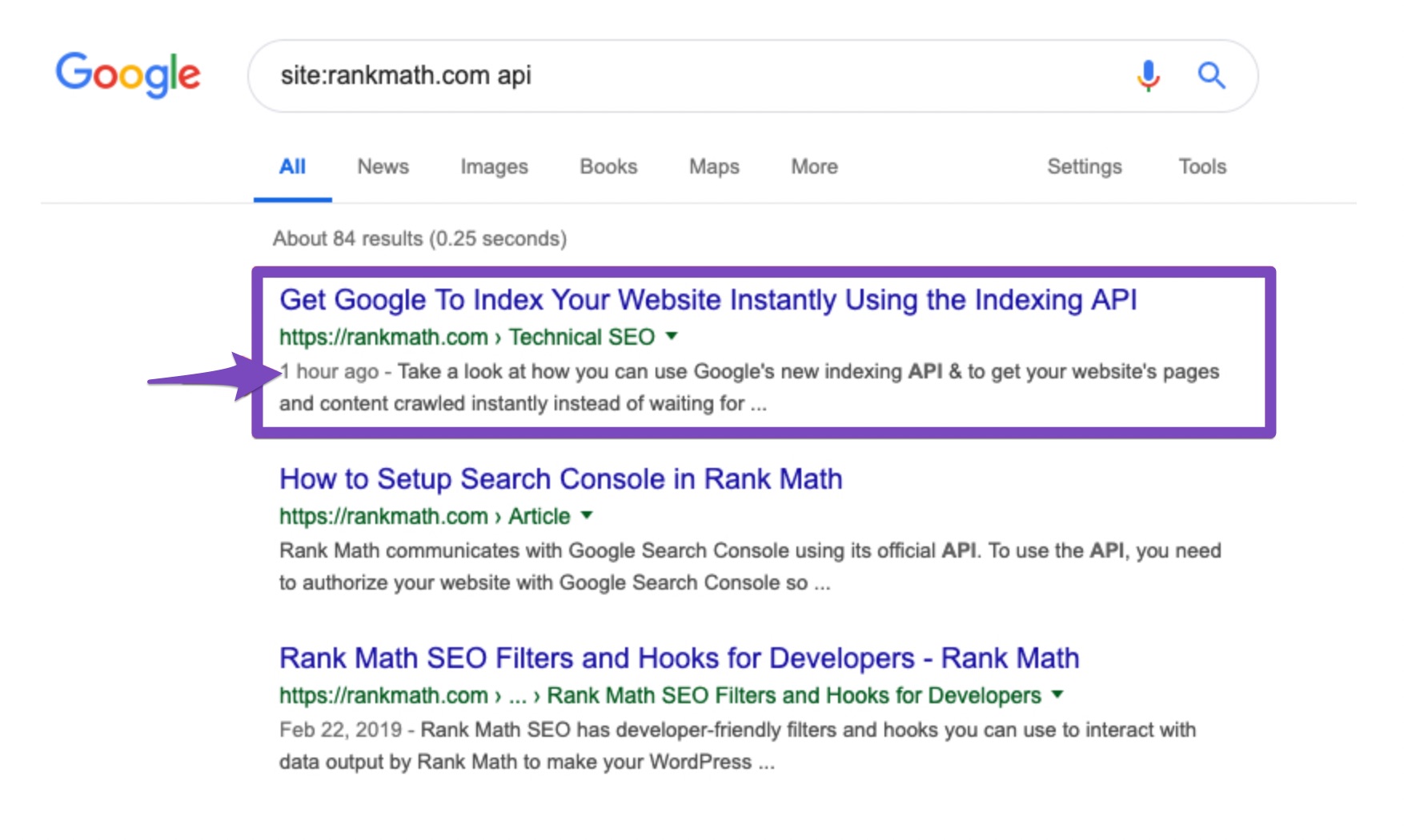
Not to toot our own horn, but that was a big win for us. Once that we really wrote an entire post with a detailed walk-through so you can get your content indexed and ranking just as quickly, if not sooner.
32 Start Optimizing Your Site Speed (Core Web Vitals)
Core Web Vitals are a new set of website performance metrics aiming to standardize how a website’s user experience is measured from a performance & user experience perspective.
The Google Search Console includes a Core Web Vitals report that breaks down pages by those that are marked as Good as well as Needing Improvement and last but not least those classed as Poor.
Results are broken down for both mobile and desktop devices but given that Google’s indexing is primarily mobile – we suggest focusing on the results for mobile devices which are almost always more challenging to improve.
What Are The Core Web Vitals Metrics?
There are three Core Web Vitals, which are:
- Largest Contentful Paint (LCP), which measures the time it takes to load the main content on a web page.
- Interaction to Next Paint(INP) is a metric that measures the delay between a user’s action (like a click or touch) and the resulting visual update on the webpage, which is referred to as the “next paint.”
- Cumulative Layout Shift (CLS), which analyzes how pages load and whether shifts in the layout could cause users to inadvertently click other elements on a page.
This marks a significant step in how Google is shifting more towards including User Experience in its ranking algorithms.
Learn more about optimizing your website for performance & Core Web Vitals here.
33 Consider Setting Tags, Categories and Other Low-Value Pages to Noindex (depending on your site)
By default, there are several different page taxonomies WordPress creates (i.e. categories and tags). Categories can serve an important purpose especially on eCommerce stores or even content-heavy sites where content is strategically grouped together.
That being said, if nothing of value is done with category pages then indexing them at all is altogether undesirable.
The same goes for Tags that are rarely useful to users who aren’t already on your website. So, from an SEO perspective, you’d want to get rid of these low-value pages instead of other more high-value pages that are worth having indexed.
This is similar to the concept we discussed earlier about making sure the media attachment pages that WordPress creates are not indexed.
Fortunately, you can set these pages to noindex using Rank Math.
Simply navigate to Rank Math → Titles & Meta – as shown below:
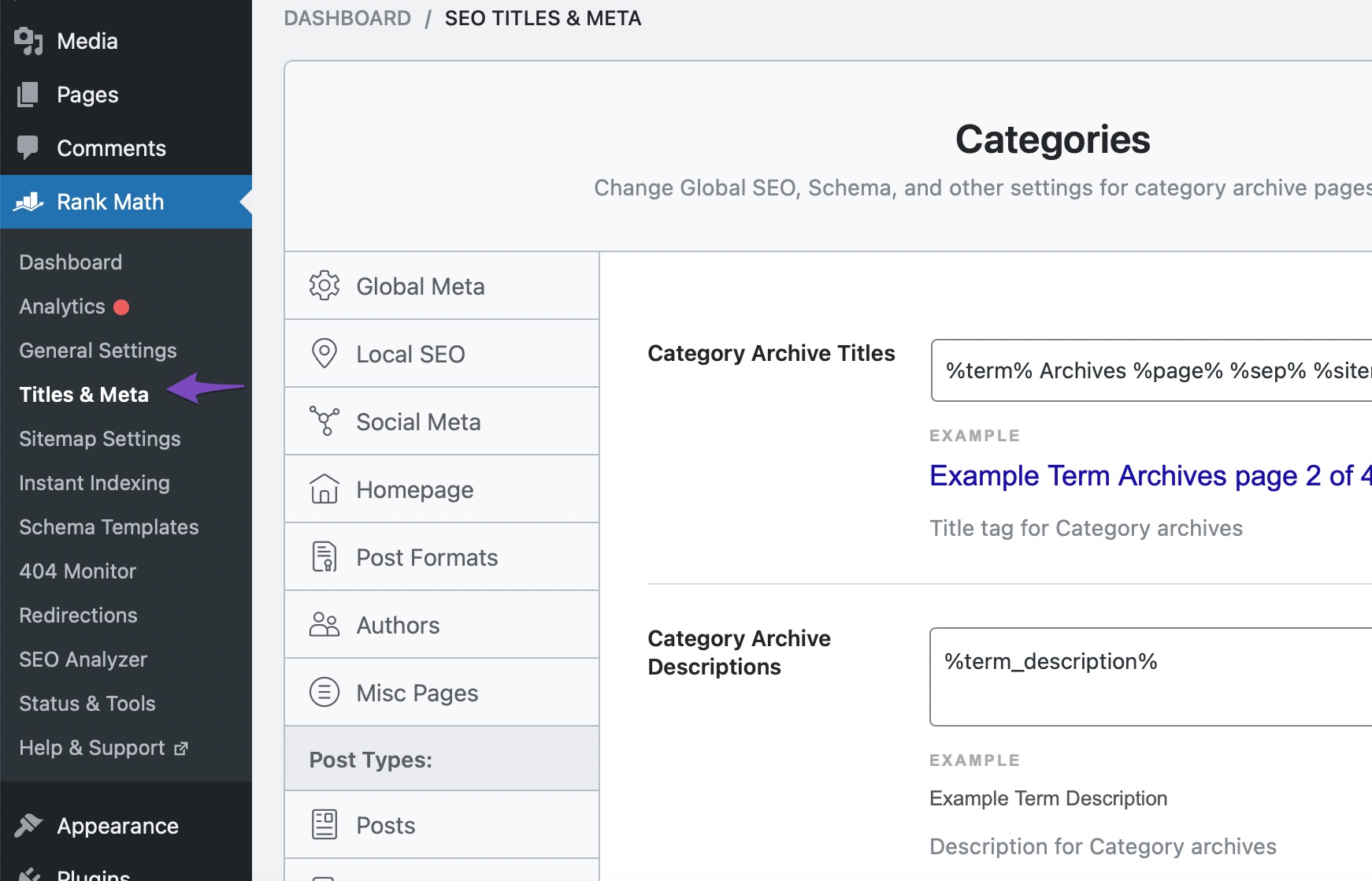
At which point all you need to do is locate the specific taxonomy you would like to noindex. Click into the tab, for example below we’re in the Categories tab:

And once here, simply enable the No Index option as shown above by ticking the checkbox.
Note: Please proceed with caution when making changes such as these mentioned above. They need to be considered carefully especially on existing sites where these pages may already attract a significant amount of traffic in which case the change may not be justified and could result in the loss of organic search traffic in both the short-term and the long term.
34 Take Advantage of Schema Markup To Win Rich Snippets
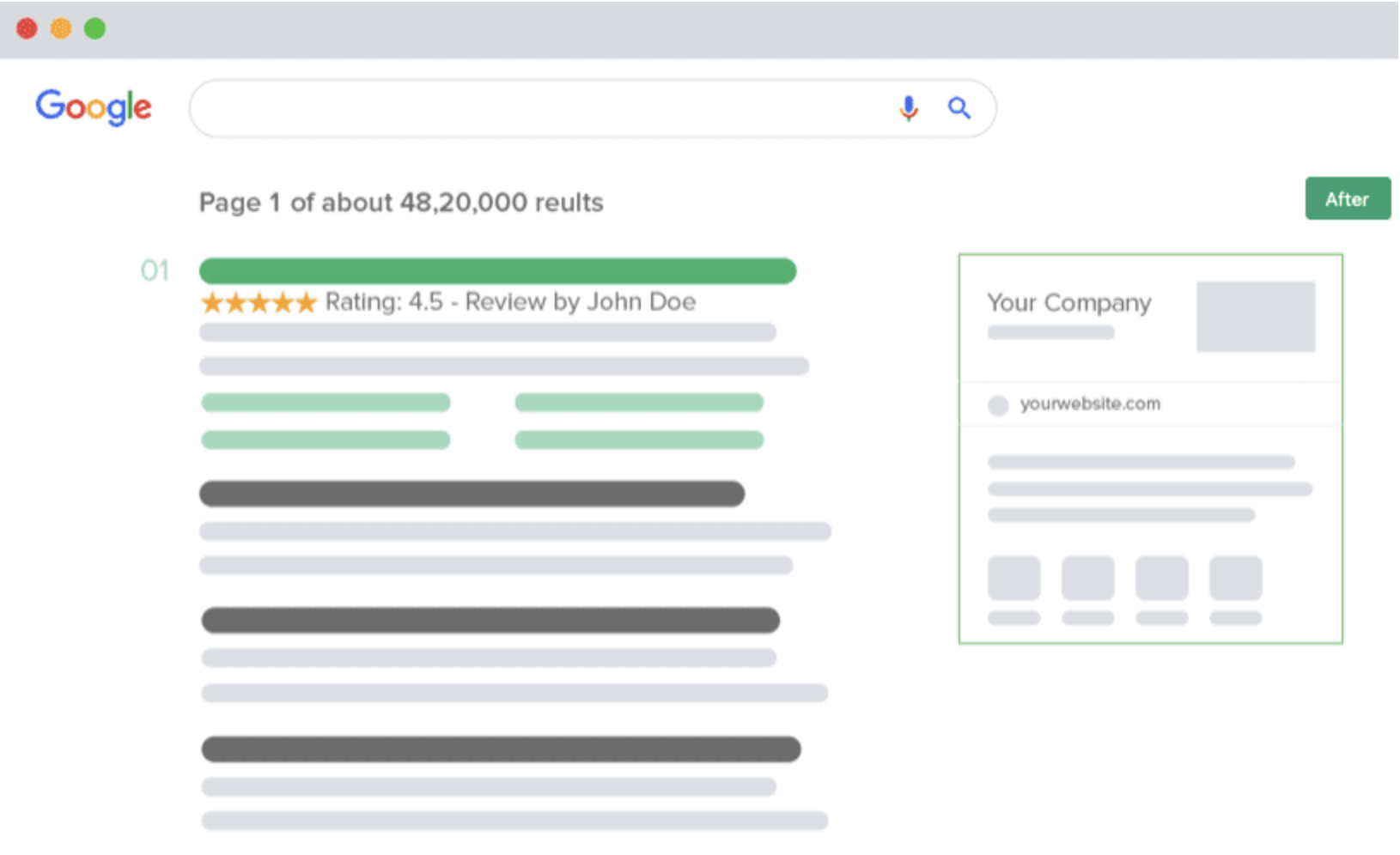
Schema markup can play a pivotal role in the performance of your site in search.
And it’s easy to see why. Who’d rather click a regular boring old search result when there’s one right above (or even below) it that shows a rich snippet?
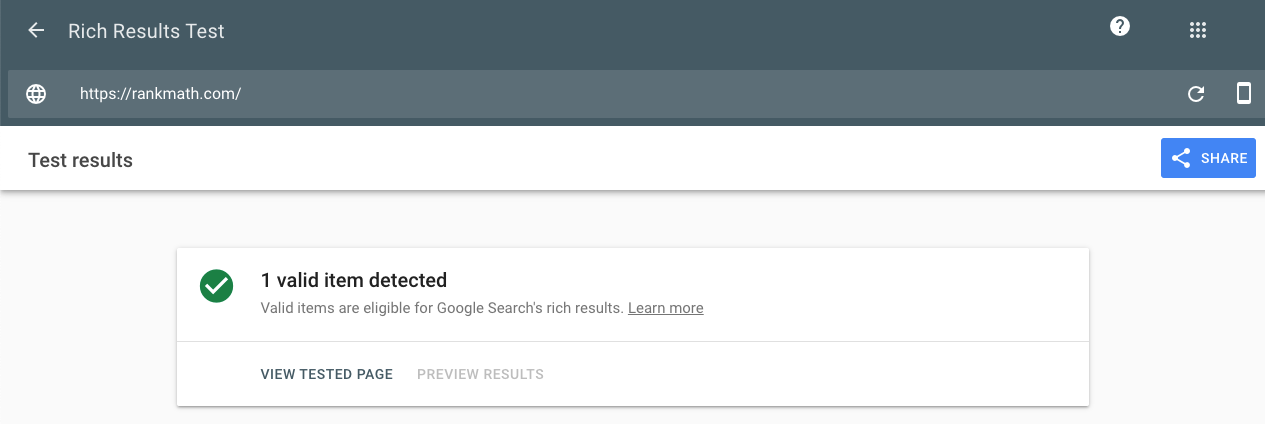
Taking full advantage of it can help Google understand your content as well as inform the way it displays your website in search (i.e. rich snippets) all of which enhance the overall searcher experience.
Fortunately, here at Rank Math a large part of what our product team has focused on is simplifying advanced structured data implementations and making them accessible to everyone using WordPress as their content management system.
Learn more about how to take full advantage of Schema Markup for your website here.
35 Take Advantage of The Markup That Social Networks Support
This step is going to help Google to associate your website with social networks all of which can lead to informing what information appears in your brand’s knowledge panel.
Once again, this is where the Rank Math WordPress SEO plugin we installed at the start of this guide comes in.
If you’ve ever seen someone link to a website on a social networking site like Facebook or Twitter, you’ll notice that an image appears there along with a title and short description. This is all done using what is known as OpenGraph metadata.
A standardized data format that website owners can use to let social networks pull in information about their website to enhance the way their site appears on their platform.
(somewhat akin to what Schema Markup does in Google Search)
For example, here’s what one of our recent blog posts looks like when shared on Facebook:
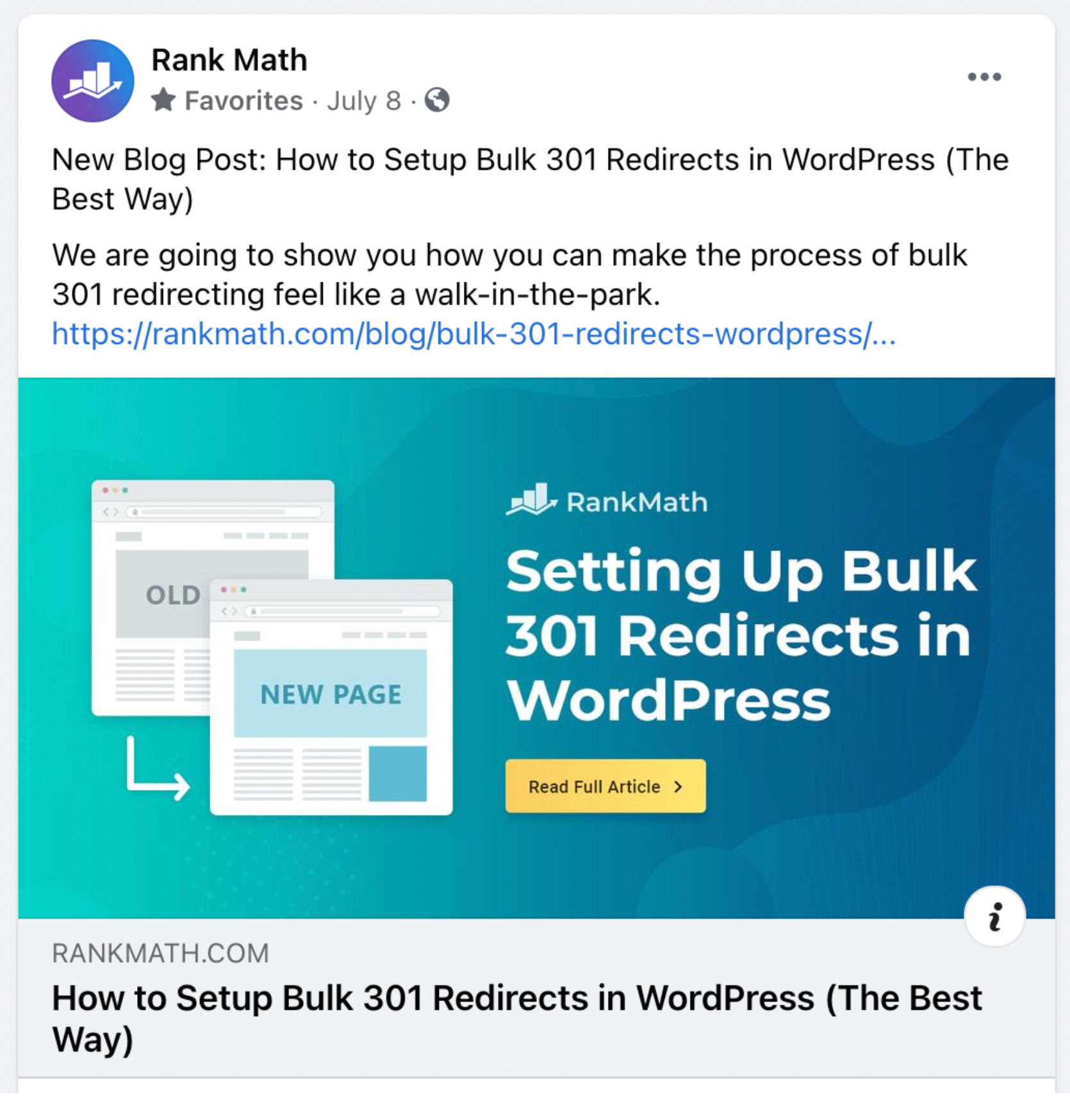
This layout is much more likely to encourage people to click through and read your content than if it were just a plain link.
All of these options and settings can be configured in Rank Math SEO, as shown below:
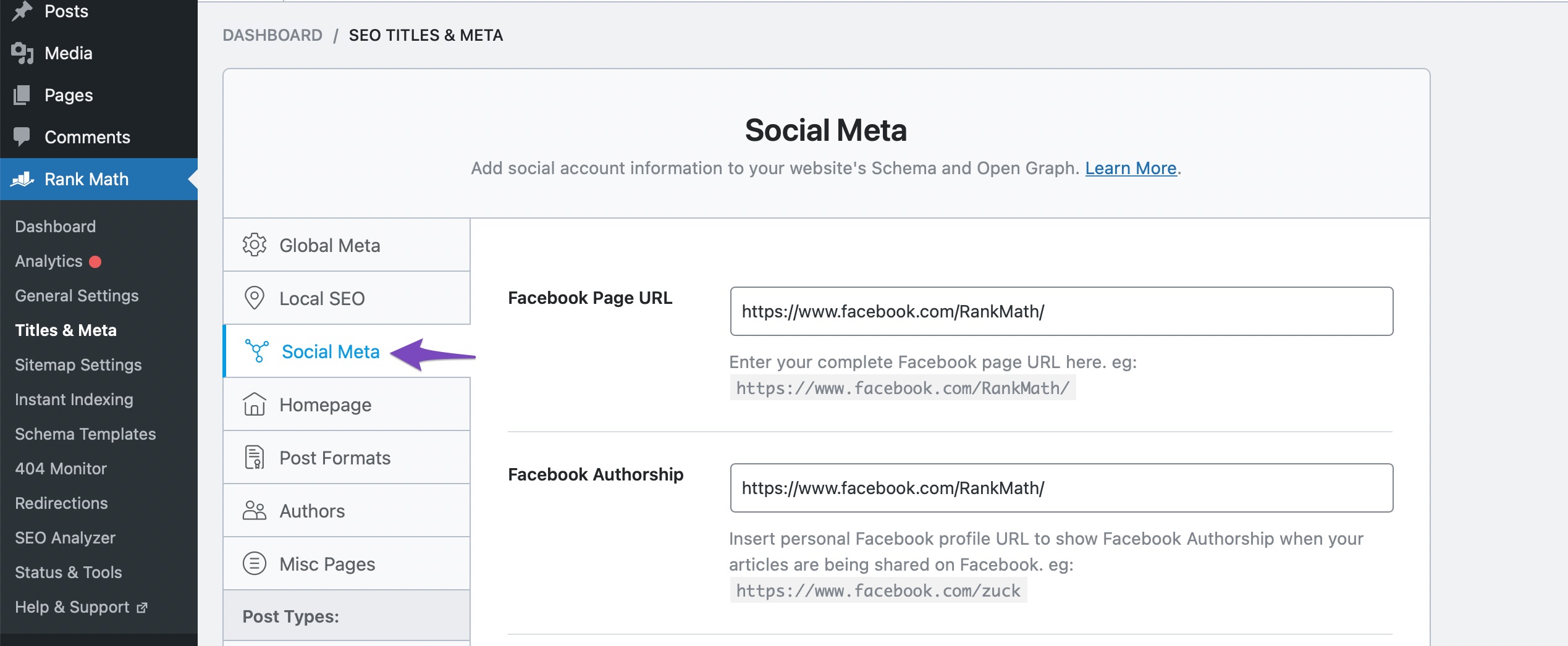
Learn more about Rank Math’s Social Meta settings here.
36 Use The Last Updated Date Instead of Post Published Date
As we’ll cover in more detail, regularly updating your evergreen content is an essential part of any successful SEO and content marketing strategy.
This also brings into question whether it is worth changing the original publication date in WordPress? Or, should you remove it entirely?
Our suggestion would be to use the last modified or updated on X date to show searchers accurate information as to how up-to-date the information they’re reading is. As a result, this also helps inform search engines how relevant and timely your content is…

Showing this information on the front end of your website can usually be done on the theme level.
So if your theme doesn’t support it, we recommend contacting your theme provider to ask them what the best way to implement this on your site would be.
Or, you can alternatively use a plugin such as the WP Last Modified Info plugin.
37 Format Your Content To Help Readers Find Information
Content structure is easy to overlook which is great because it’s something that can work in your favor.
Few people really take the time to structure their posts effectively. But since you’ve made it this far in this WordPress SEO guide, we’re not going to leave you hanging.
Here is exactly how:
Use Proper Heading Tags For Sections
Online readers tend to skim-read content.
This doesn’t mean that you should write for people that aren’t reading your content in its entirety, but it does mean that you can make it easier for everyone to get more out of the little time they may be spending on your page.
The best headings and subheadings:
- Are short, and descriptive of the information that is to follow in the subsection.
- Tell a story as you read the subheadings alone; you should be able to tell exactly what the article is about.
- Use numbers when it is suitable to do so (such as in a list, like in this post, or in a how-to guide where every subheading marks another step in a certain process).
Include A Table of Contents for Longer Content
Table of Contents make longer content far more digestible for readers and they also make it possible to earn a rich snippet in search where your site in the SERP will also link to specific sections of your content (these rich snippets all occupy additional real estate in search engine results pages which, in turn, has been shown to improve click-through rate).
Add White Space To Your Page By Writing Shorter Paragraphs
Nobody likes reading endless blocks of text.
Breaking paragraphs and sections apart into digestible little nuggets of information makes it easier for readers to make it to the end of your content.
Add Bulleted Lists or Tables To Share Formatted Information
Any information that deserves to be formatted in a bulleted format or in a table should be.
Not only does this make it easier for readers to see information at a glance and add some variety to your content so that it isn’t just all regular blocks of text – this will also help you win rich snippets in search.
Rank Math has its own Table of Contents block and makes it easier for your readers to navigate your content.
Learn more about Rank Math’s Table of Contents block here.
38 Start Earning Links From High Authority Domains
While internal links are incredibly valuable – when you’re ready to start taking things to the next level, this is where external links come in.
Backlinks still play a pivotal role in a site’s ability to rank.
These are links from other high authority domains to your own website and specific pages on your website. A simple way to get started with link-building riffs off of the concept we featured earlier in this post is that people shouldn’t shy away from linking to other content.
Simply because we’re big believers in the abundance mindset and we adopt that when it comes to our thought process about competitors as well as with linking to great content. This is why we often link to content that isn’t our own. And the benefit of doing this is that it can also be a great way to start a conversation with other website owners.
If you’ve linked to a site in your content, send them an email (or perhaps tag them in a Tweet to let them know) and ask if they’d be interested in sharing it if it would be relevant to their audience. We use this approach a lot ourselves and it’s led to connections and great relationships with people at other companies that we still have to this day.
39 Track and Avoid Keyword Cannibalization
What Is Keyword Cannibalization?
Keyword cannibalization is when two or more pages on your website are competing against each other for the same keyword.
The best-case scenario for this would be that the keyword cannibalization results in your site ranking both pages for the focus keyword — and variations of that keywords.
However, in the worst-case, this can mean that you’re preventing both pages from ranking by splitting content into two separate very similar pieces of content neither of which are truly complete.
Keyword Cannibalization Example
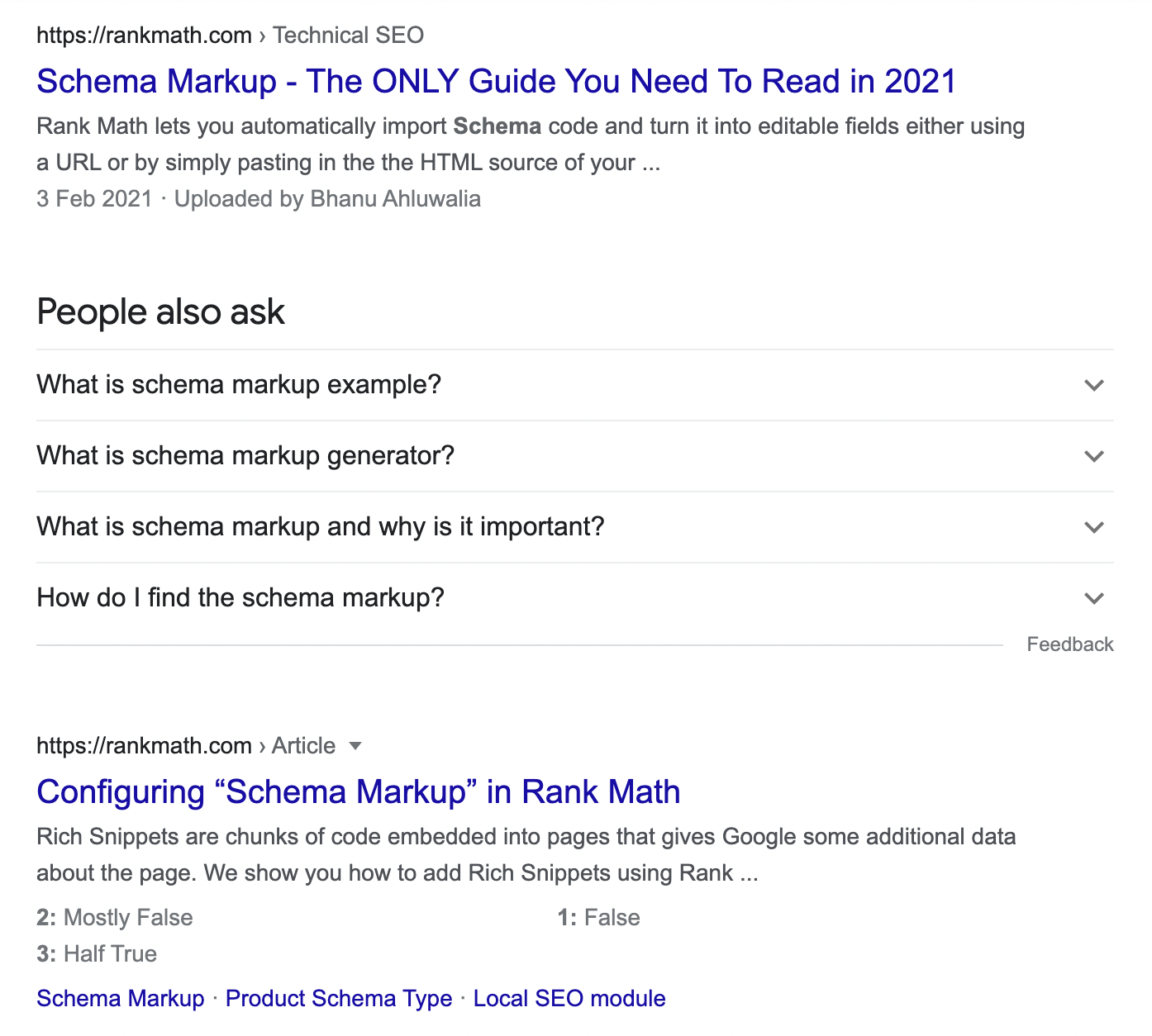
The key here again is to evaluate the intent.
The example above is our own but shows different content we have on the same topic. One blog post is a detailed, definitive guide on Schema Markup and is not serving the same purpose as our other knowledgebase article on covering the same topic.
We’re ranking for the same keywords but the search intent drives viewers to one blog or the other based on what they need so we’re not harming our ranking in this instance.
How to Check Keyword Cannibalization
Our personal favorite way to check for keyword cannibalization issues for our WordPress websites is using Rank Math Analytics.
We built this solution into our product to make Analytics data from traditionally complex sources( including the Google Search Console and Google Analytics) more accessible and actionable for you.
To check for Keyword Cannibalization using Rank Math, be sure to use the built-in Keyword Rank tracker to get the correct report.
When you run the report here, you can see each keyword your content is ranking for.
For example, below we’re zeroing in on the SEO tools keyword. It shows that on that particular website, only one of the blog posts is ranking for that keyword thus there is so there is no keyword cannibalization happening in that instance.

If a lot of posts show up under that one keyword then that would warrant looking into it further because there would be some cannibalization clearly happening there.
Learn more about Rank Math Analytics here.
40 Understand and Use Nofollow, Sponsored and UGC Link Attributes Where Applicable
Nofollow Links
Nofollow links are links that contain the nofollow attribute. For example, this is what the HTML source code for a link to rankmath.com would look like with the rel=nofollow attribute:
<a href="https://rankmath.com" rel="nofollow">Rank Math</a>
Nofollow links indicate to search engines that a link shouldn’t be followed (i.e. ignored). That being said, Google has altered how they treat the nofollow attribute along with new ways of determining the true nature of a link.
You want to use them, but you want to use them correctly so be sure to brush up on the what, why, and how of it.
Sponsored Links
Sponsored links, as the name implies, were designed to make it possible for a website to explicitly state when a link is earned as a result of sponsorship (i.e. in exchange for money or another form of compensation). For example, this is what the HTML source code for a link to rankmath.com would look like if the rel=sponsored attribute would look like:
<a href="https://rankmath.com" rel="sponsored">Rank Math</a>
Note: It is against Google’s guidelines to pay for backlinks so it is important that if you do, you are encouraging the website owner to use the sponsored link attribute.
User-Generated-Content (UGC) Links
UGC stands for user-generated content.
Links should use this attribute to indicate that a link has been created by the users of a website as opposed to the owners/operators of the website itself.
For example, this is what the HTML source code for a link to rankmath.com would look like if the rel=ugc attribute would look like:
<a href="https://rankmath.com" rel="ugc">Rank Math</a>
What Is A DoFollow Link?
And last but not least, let’s talk about DoFollow links. Just kidding, they’re not a thing but these somehow make it to other lists of link types so we wanted to go ahead and dispel that myth right away. There is no such thing as a DoFollow link.
By default, every link created on a WordPress website is a dofollow link in that it does not have the nofollow attribute applied to it. These are the types of links that help build your website authority and (tend to) improve your search engine rankings because link juice is passed from one page to another.
Click here to learn more about how to attribute links correctly on your WordPress website here.
41 Track Negative SEO And Keep It Under Control
As with every industry, SEO can work for you and can be used against you. Chances are, someone is likely working against you already.
Many are oblivious to competitors investing money to actively work against them and many don’t know how to deal with negative SEO.
The premise of negative SEO is in large part surrounding the concept of link building.
As many of you know manipulating links is against Google’s guidelines and doing so can result in a link penalty. But since anyone can link to your website, it isn’t that difficult for someone to make it look like you’re trying to manipulate search results in your favor by adding lots of links.
This can cause one of three things:
- Your website gets a link penalty.
- You slowly start to lose traffic.
- And last but not least, your site is entirely excluded from search.
This is why we highly recommend using a solution such as Ahrefs or Semrush to monitor your backlink profile to keep tabs on whether any unnatural links start popping up faster than usual (with gambling or adult-themed anchor text, etc). While we can definitely agree that having to deal with this is unfair – there, unfortunately, isn’t a way to stop people from creating bad links pointing to your website.
The silver lining is that Google has created their Disavow Tool that makes it possible for you to create a list of URLs and domains you’d like Google to ignore to protect yourself.
42 Use Specific Local SEO Strategies If Applicable To Your Business Model
Local SEO is extremely important for businesses that serve particular geographical locations. Think anyone from your local plumber and electrician all the way to the local branch of a well-known car rental company. They can all benefit from local SEO.
The main starting point here is registering your website and business with Google My Business, Bing Places & Apple Map Listings. All of which are completely free and will increase your chances of showing up for location-specific searches – such as, when people search for Mexican restaurants in London.
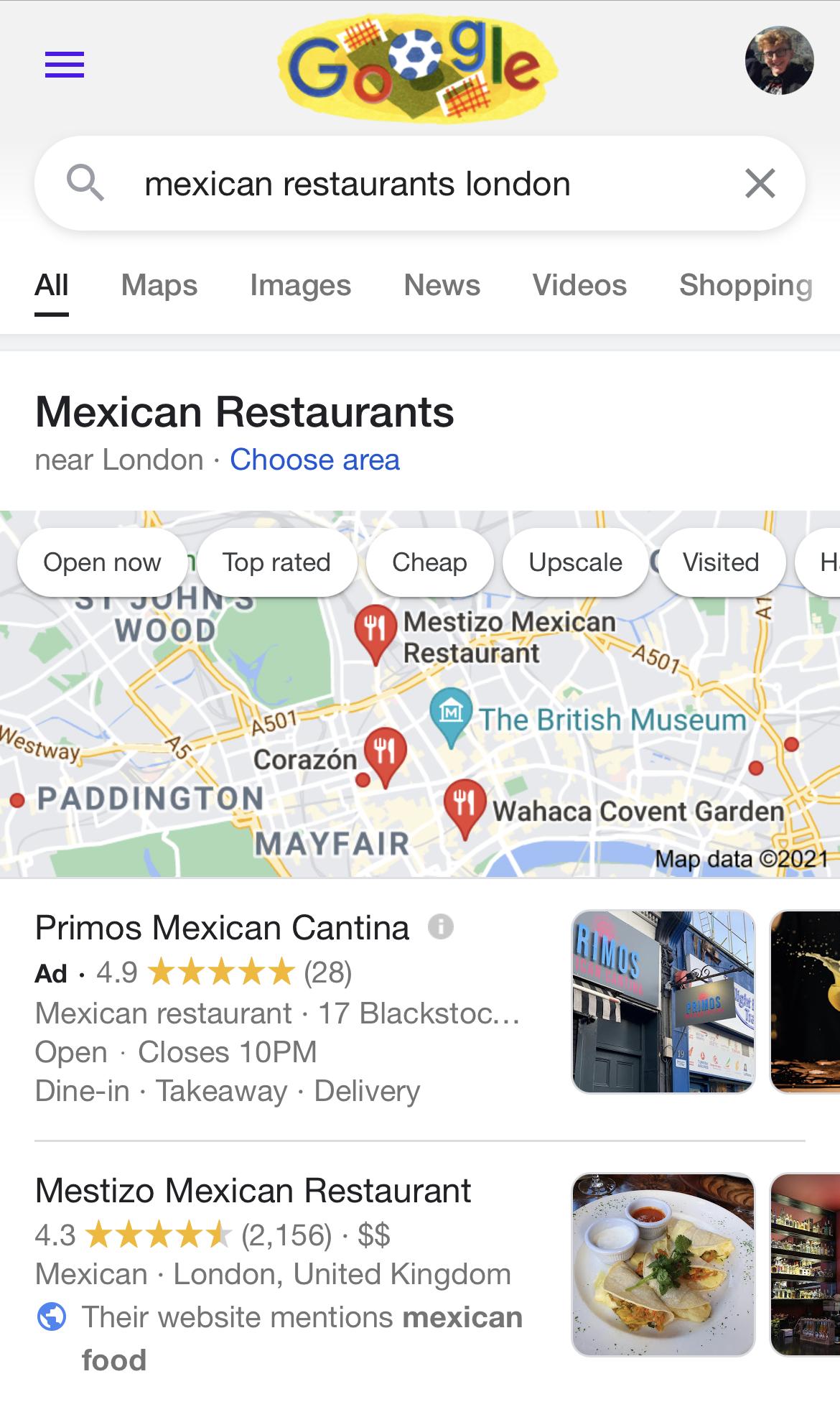
Learn more about Local SEO in our definitive guide here.
43 Start Dominating International Markets with Multilingual SEO and Content
As you grow, an additional consideration for your site should be to evaluate whether producing content in languages aside from English is a worthwhile investment.
Very few companies take advantage of this and that means that the few who do are the ones benefiting from capturing other markets.
While not as big as English-speaking demographics, translating your site into languages like Spanish and German give you the ability to target an entirely different market that also has spending power (i.e. likely to spend money on your products/services or contribute to your ad revenue if you’re a publisher).
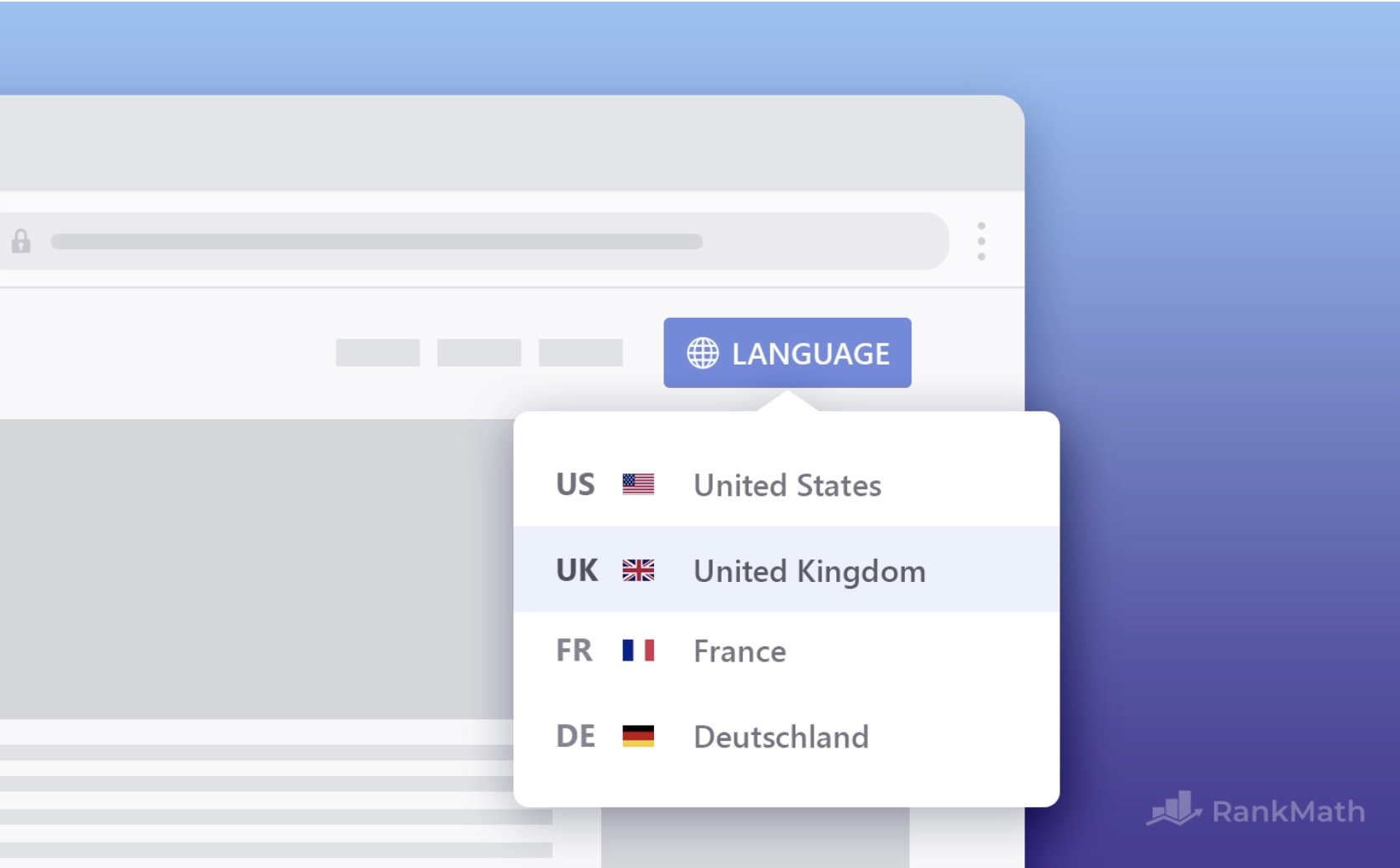
In terms of implementing this on your WordPress website, we recommend using either the WPML plugin, Weglot, or TranslatePress.
44 Frequently Monitor 404 Errors and Fix Broken Links
Users don’t like broken links. As you’d expect – neither do search engines.
Rank Math makes fixing broken links on your website extremely simple thanks to the built-in 404 monitor matched with the built-in Redirections manager.
To start finding and fixing broken links faster than ever, ensure that the 404 Monitor module is enabled, by navigating to Rank Math → Dashboard, as shown below:
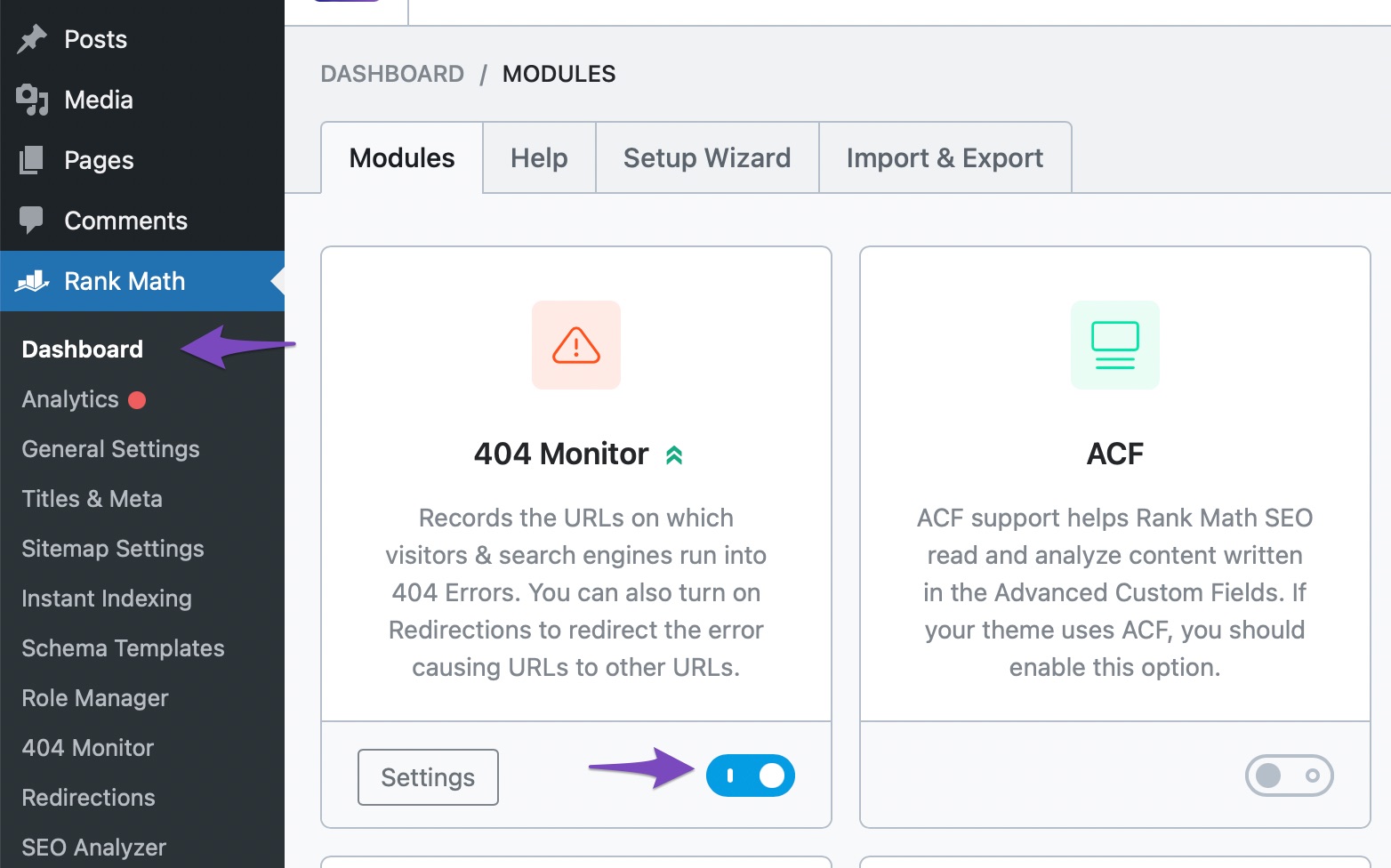
Make sure the toggle is set to on, as shown above. Then, you’ll be able to navigate to Rank Math → 404 Monitor in your WordPress dashboard to conveniently create redirects for all of the broken links on your website in just a few clicks:
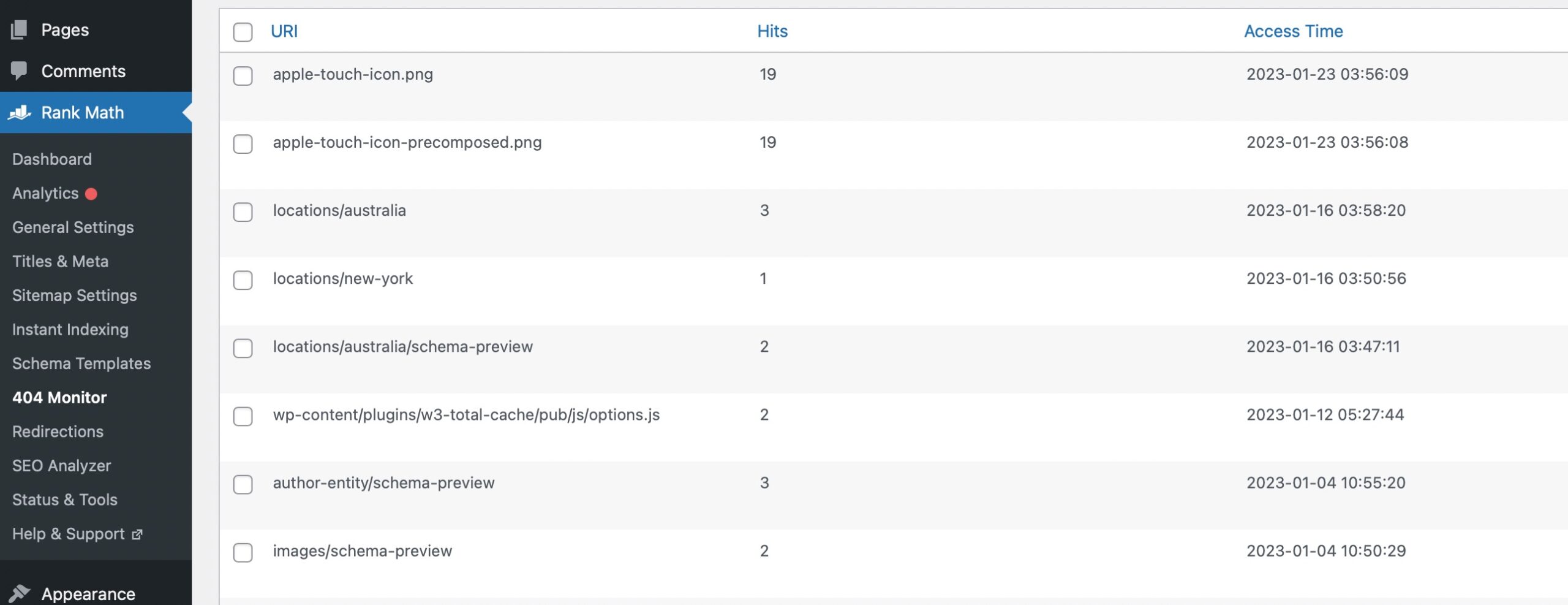
45 Start Performing Scheduled SEO Audits
Now that you’ve got a solid handle on the technical SEO setup of your website – it’s time to start performing regularly scheduled SEO audits to keep everything in check.
This is particularly important for websites that have more than one person working on them at once.
46 Keep An Eye On Your Site’s Performance
SEO never really ends, but spending hours analyzing your analytics data from all the sources out there is not a good use of your time.
That’s why we built hands-off email reporting in Rank Math SEO that lets you deliver regularly scheduled email updates to you (and your clients) to ensure you’re always keeping tabs on your site & are sure you don’t miss anything important.
Learn more about SEO Email Reporting in Rank Math.
47 Monitor Keyword Ranking Changes
Looking at your search traffic broadly is great and helps keep a quick pulse on how your efforts are progressing, an even better way of keeping track of things on a granular level is by monitoring keyword ranking changes.
This will be extremely helpful in telling things like:
- Did an update we released to this piece of content result in a sudden increase or decrease in rankings?
- Are we being affected by a Google Algorithm Update?
- What content should we start focusing on improving before it decays?
And much, much more.
48 Build A Process To Update Old Content Instead of Only Publishing New Content
As mentioned above, keyword rank tracking forms an important part of your SEO and content strategy because it can play an important role in informing what to focus on and what to prioritize.
Although we always recommend prioritizing evergreen content when possible, the reality is that not all content is going to be evergreen.
So to keep content fresh and relevant to searchers (in such a way to ensure that it still fulfills search intent), you need to build content refreshing into your content production process.
People often schedule publication dates but they never schedule a date and time for when we intend to regularly revisit previously published content to see if anything is no longer relevant, needs to be removed, or needs to be added to ensure that it is still as complete and as helpful to people that land on the post as it was when first published.
49 Be Careful With Staging Environments and Potential Duplicate Content Issues
Staging areas can often end up with some mistakes.
That could mean publishing a landing page template that should only be for internal use or forgetting to noindex staging areas to ensure that they aren’t appearing in search (and don’t cause duplicate content issues).
The list can go on and on, but they happen.
One super simple way to identify many of these issues is by creating a bookmark in Google Chrome that contains the following value:
javascript:window.open('https://www.google.com/search?q=site%3A%27+window.location.hostname +%27 inurl:demo OR inurl:/home/ OR inurl:test OR inurl:-2 OR inurl:screenshot OR inurl:sample OR inurl:portfolio OR inurl:landing');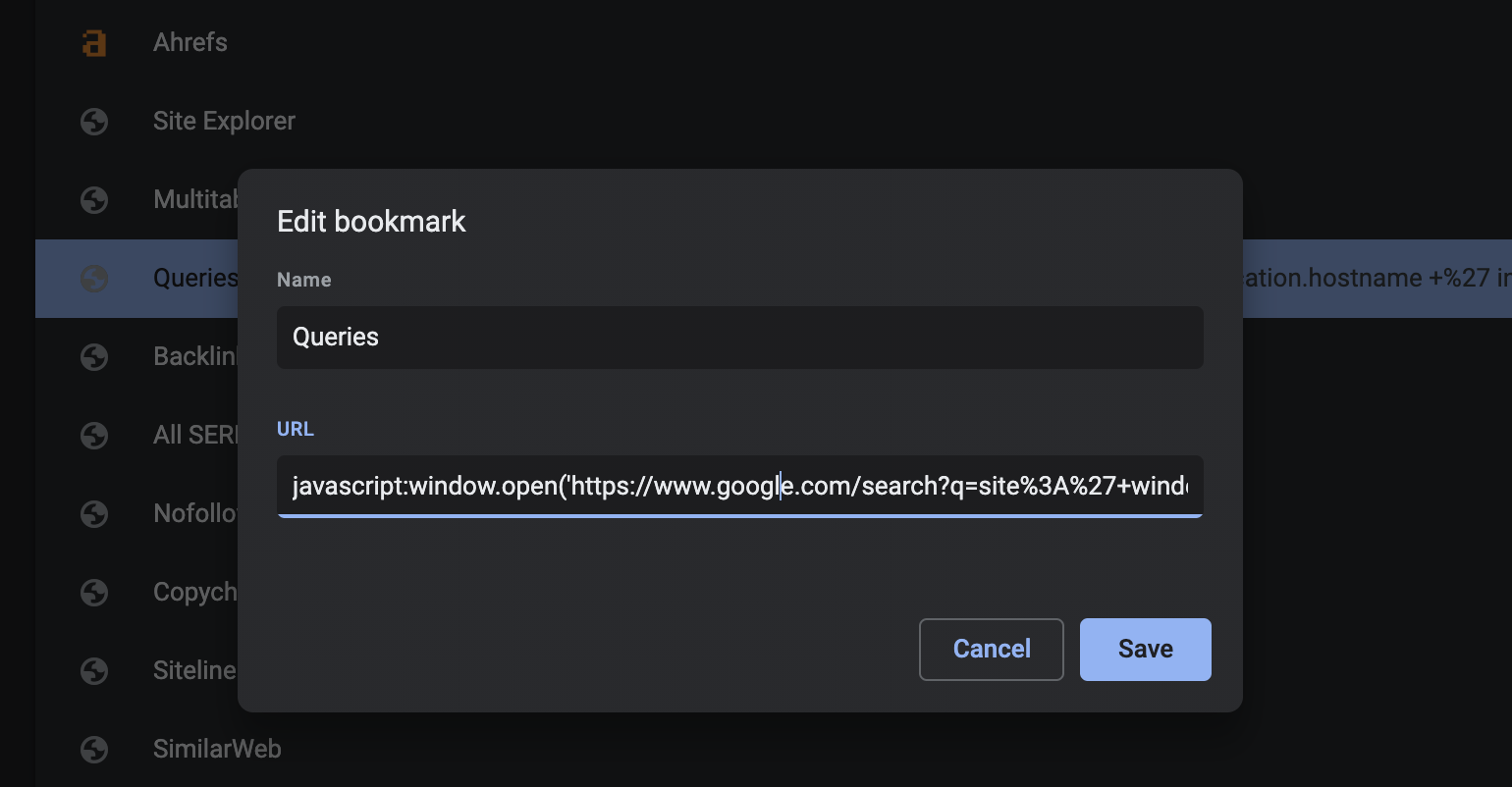
In the above example, I’ve gone ahead and named it Queries in my browser.
I do this so that when navigating to any website and clicking on this bookmark, it will perform a collection of searches using operators in Google to find pages that you would potentially not want to have indexed on your website.
It’s a handy trick so feel free to steal it *wink*.
50 Build Out Important Pages As Trust Signals To Website Visitors and Search Engines
There are certain pages that every website should have. Many of which are coincidentally also pages that are essential to establish trust with your customer base as well as search engines.
Your About Page
Your about page is your time to showcase what you stand for and who you are. Don’t hide behind a logo or fancy branding – people love seeing people.
The Contact Page
Next up is your contact page. Where can people get in touch with you? Generally, that’s the contact page on your website, so you should make this easy to find and easy to use.
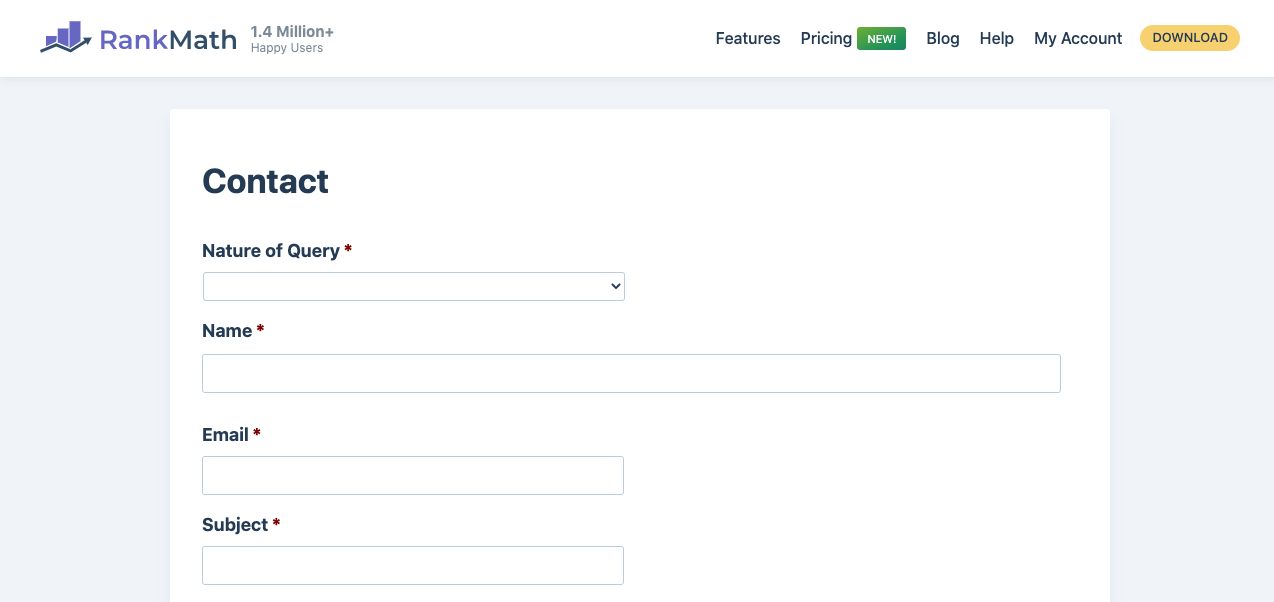
Privacy Policy and Terms of Conditions Pages
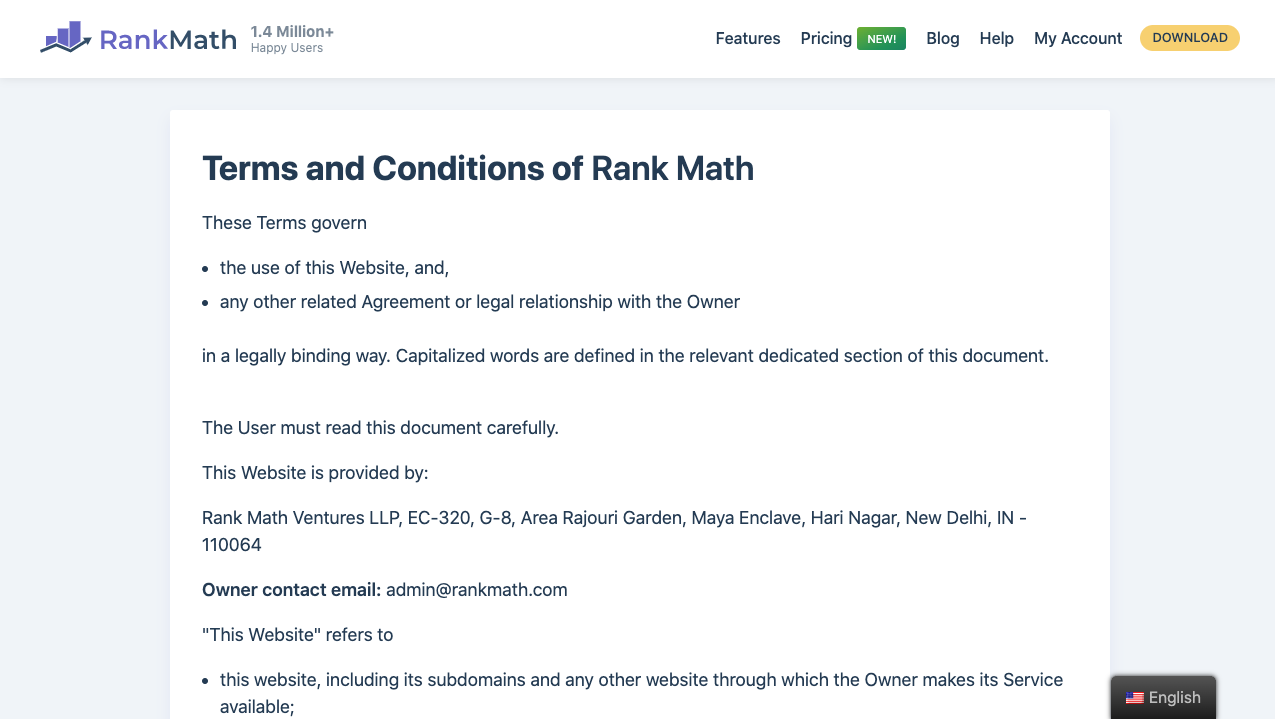
And last but not least are policies, disclaimers, and affiliate disclosures.
These are seemingly boring pages, but it’s safe to say that Google does pay good attention to them as they’ve even made it a requirement for all Google AdSense publishers to have them on their website in order to be accepted into their ad network.
And perhaps it’s easy to see why? Most websites that aren’t run with the best of intentions wouldn’t bother to include these making it a good way for search engines to tell the websites run by real people apart from the websites that shouldn’t be trusted. You can do a search to find places online to help you create these, or a lawyer to draw them up for you.
Summary and After Action Report – What’s Next
SEO is our personal favorite of four truly scalable customer acquisition channels:
- SEO
- Ads
- Sales
- Virality
Properly using SEO to your advantage can make a huge difference to the success of your business.
When it comes to technical, on-page SEO for WordPress websites (as was covered in great detail in this complete guide) – ensuring that your site is set up in the best possible way to help you drive organic traffic is the first step to turning it into your biggest source of traffic.
The strategies shared in this post are the same ones that we and our team have used to grow Rank Math’s organic traffic. If you want to learn more about how to drive traffic to your websites – you’ll love our YouTube channel with new tutorials and walkthrough videos every single week:

Have any additional questions about WordPress SEO you’d like us to cover in this post or in a future video? Let us know by Tweeting @rankmathseo. 💬
